Estonia is the northernmost of the three Baltic States. 1.3 million people live in the country and, as a consequence of 50 years of Soviet occupation from 1944 to 1991, a quarter of them are ethnic Russians. Half of them (moreless 130,000 people) is concentrated in one single county, called Ida-Viru. This little area shares its eastern border with Russia. A very peculiar one, indeed, since it parts far more than two sovereign States: crossing the border (granitsa, in Russian language) means to leave behind both European Union and NATO, of which Estonia is among the most loyal and committed members.
After the outbreak of the Ukrainian Civil War and the unilateral annexation of Crimea by Vladimir Putin in order “to defend Russian-speaking citizens abroad”, experts and strategists raised concerns towards Estonia, and especially Ida-Viru county, as the next possible target of the Kremlin’s brave expansionist policy. Indeed, in the whole EU there is no higher percentage of ethnic Russians compared with total population than the one of Ida-Viru: 73% (with peaks of 85% in the municipalities of Narva and Sillamäe). Here, in July 1993, a referendum was also held: the inhabitants were asked if they wanted the county to be autonomous from the newly declared Estonian Republic. The “yes” vote prevailed but the State Court ruled that the consultation contravened the Constitution and the movement for autonomy was deflated.
Estonia’s recent past went through a severe process of Russification, started with Stalin in the 50s and ended just after the country achieved the independence in 1991. Since that moment the Estonian government has not yet been fully able to equalize the living conditions of the vast Russian minority to the country average. Today some of the ethnic Russians have chosen to embrace with hope a common future under the Estonian flag, but on the other side there is still a huge number of them who have maintained their Russian citizenship. Furthermore, another significant part of the ethnic Russians (6.8% of Estonia’s population, according to Amnesty International’s 2015 report) are not willing to face the controversial Estonian language and culture “citizenship test” and therefore are living in the Baltic country as stateless persons.
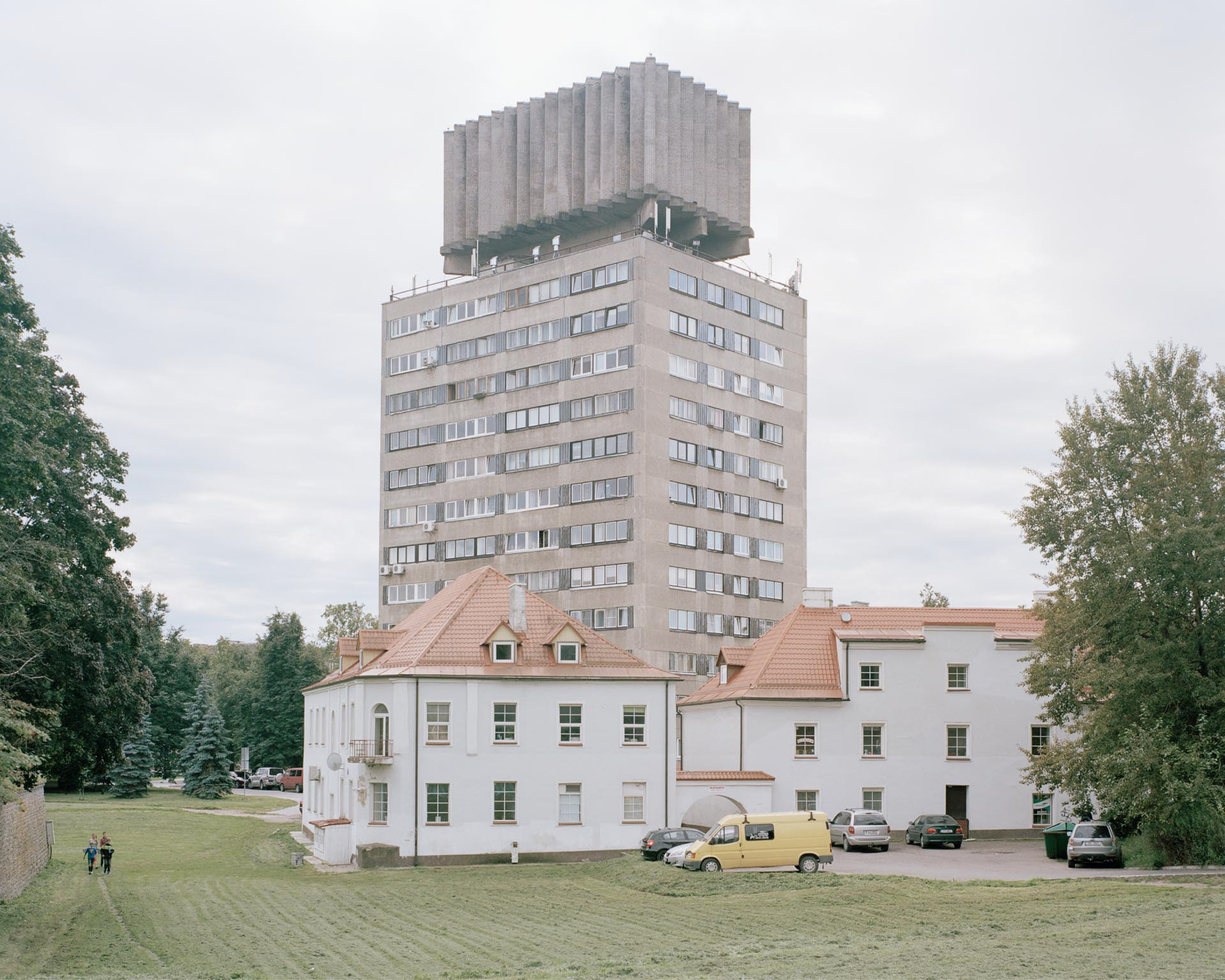
Houses and offices in the centre of Narva
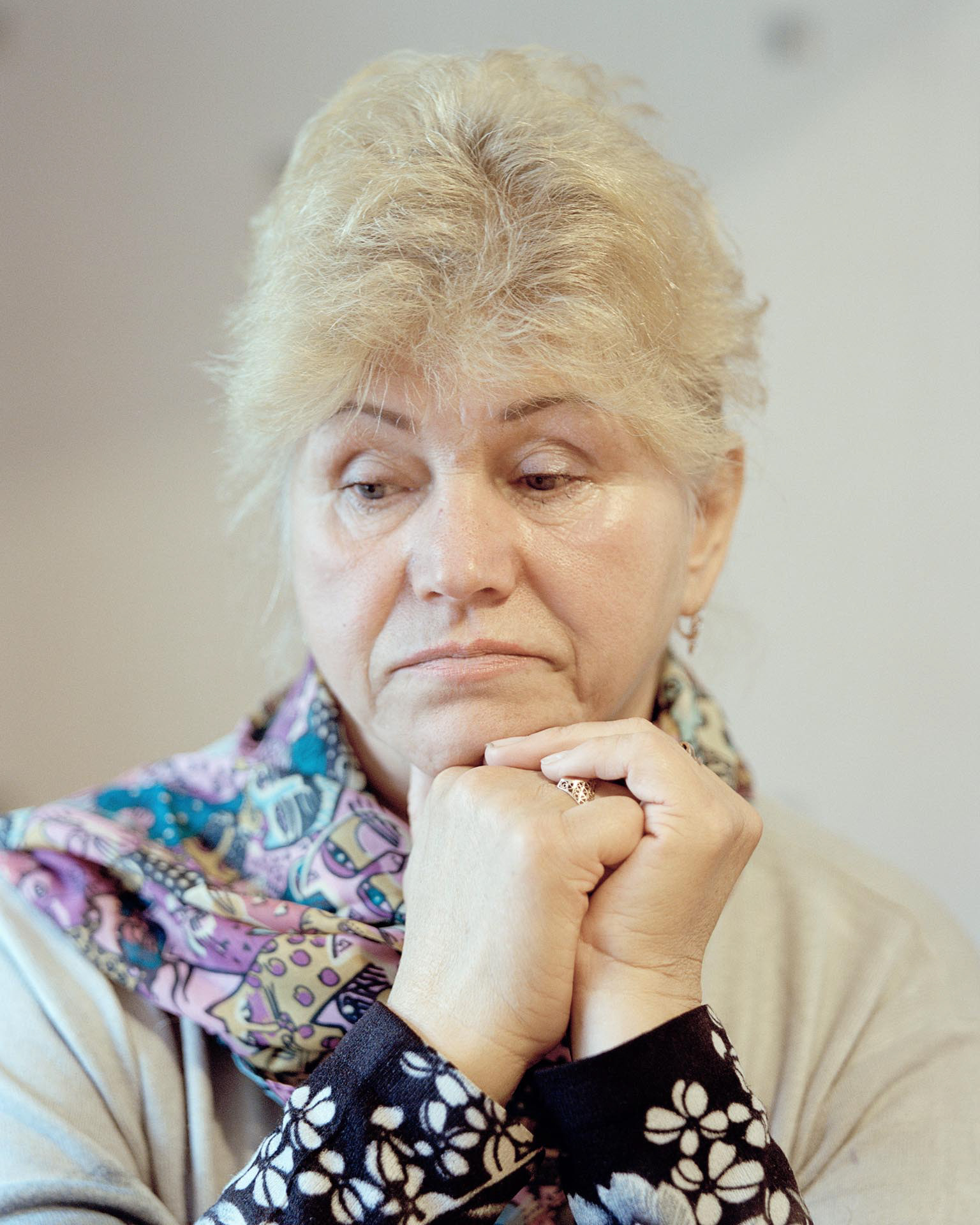
Ljubov Zvereva is the head of the most important association in Narva gathering disabled people and war wounded of the Russian community. The association helps them in finding an occupation and in the everyday life activities, Narva
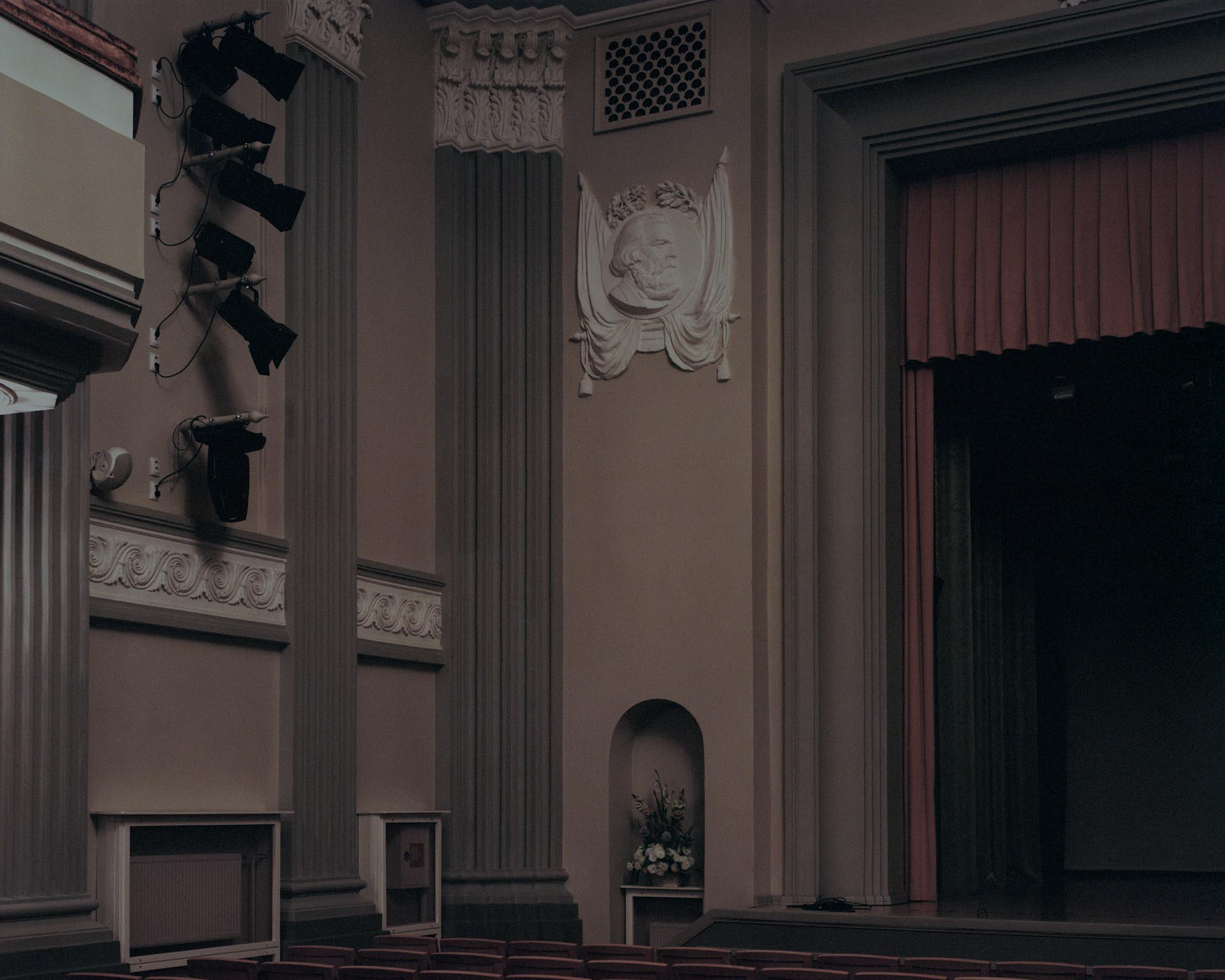
The theatre inside the Sillamäe Cultural Centre, one of the brightest and best kept example of the Stalinist architecture of the city
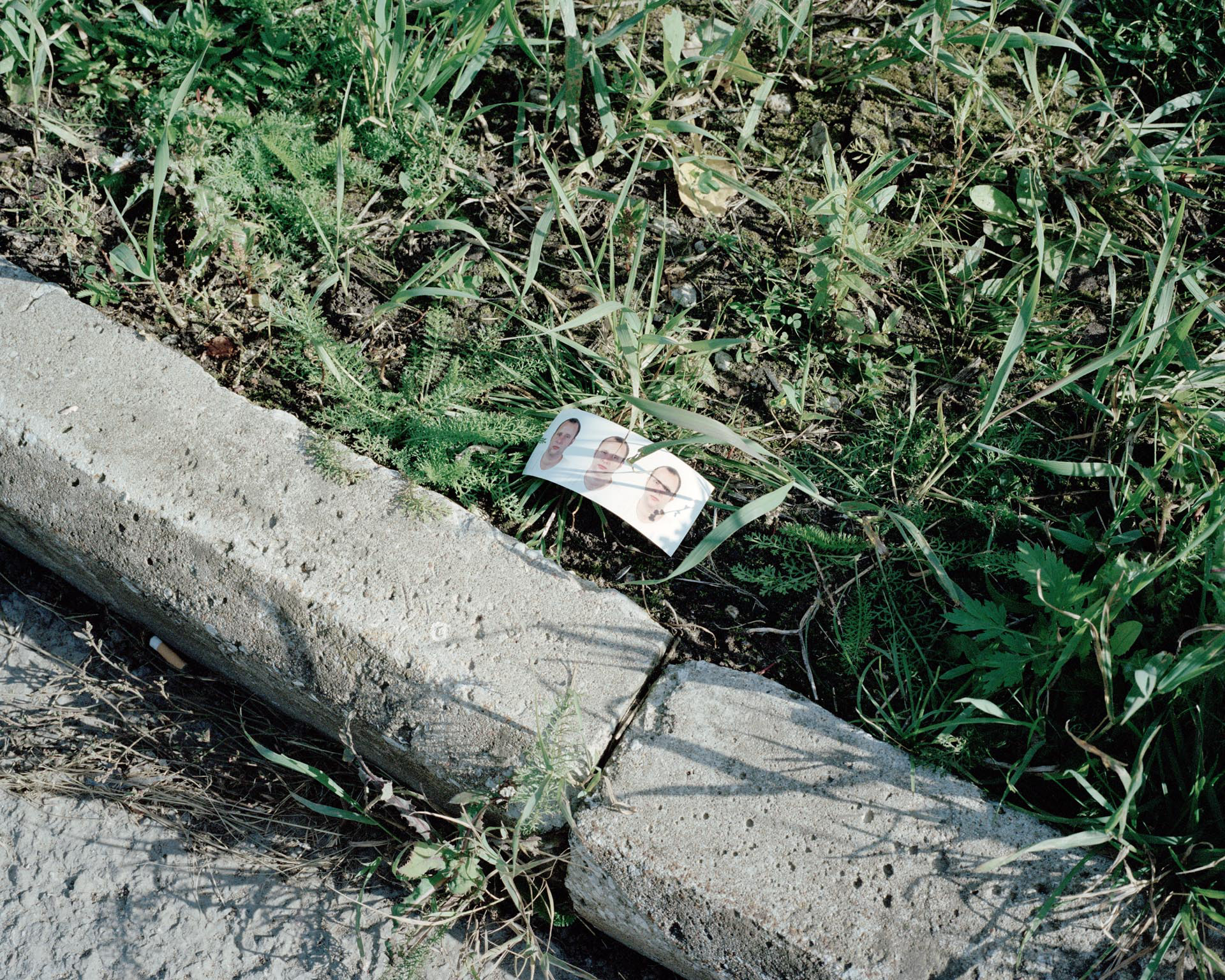
Lost ID picture in Narva, Estonia
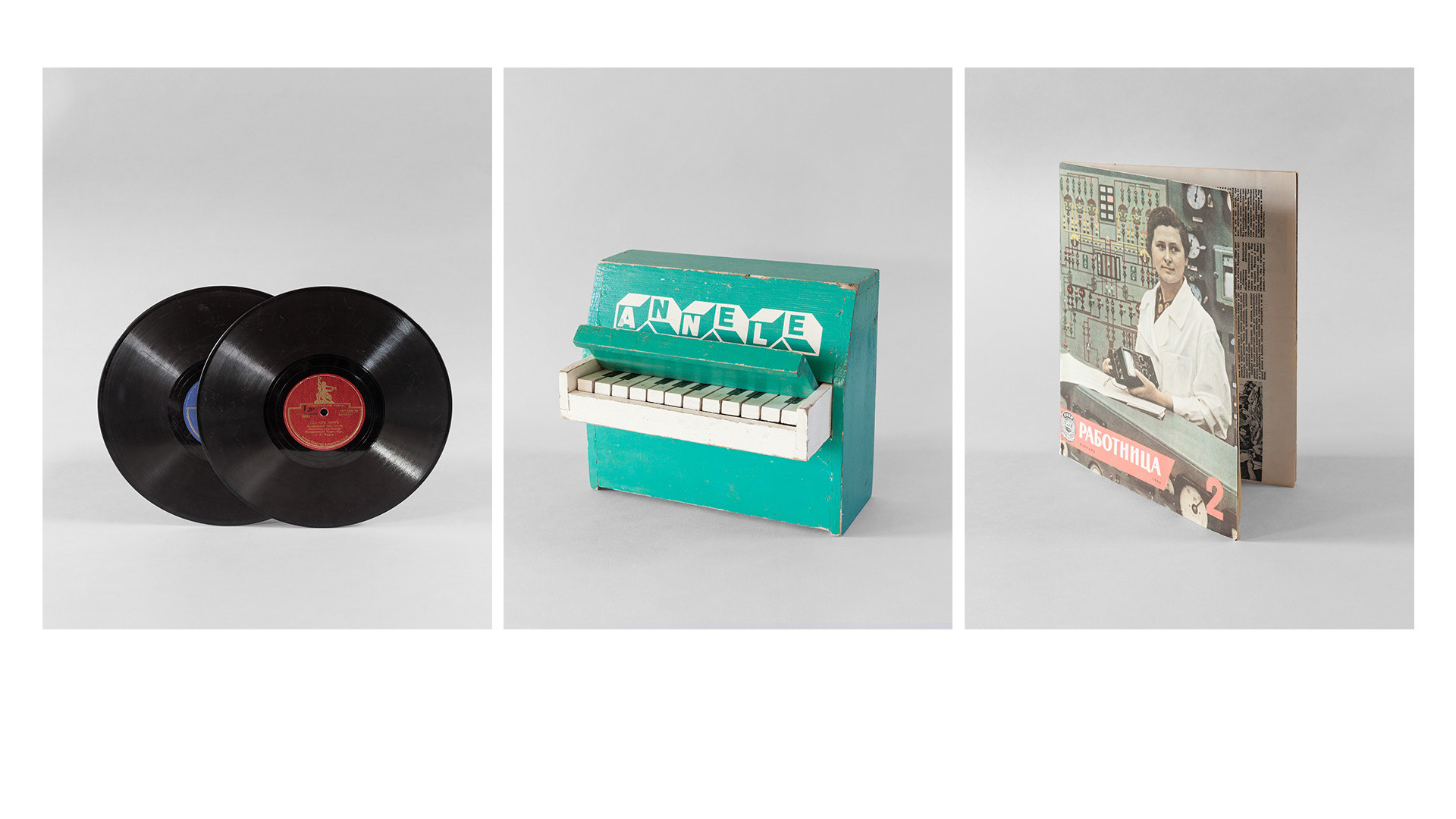
Everyday items found in situ belonging to the Soviet period
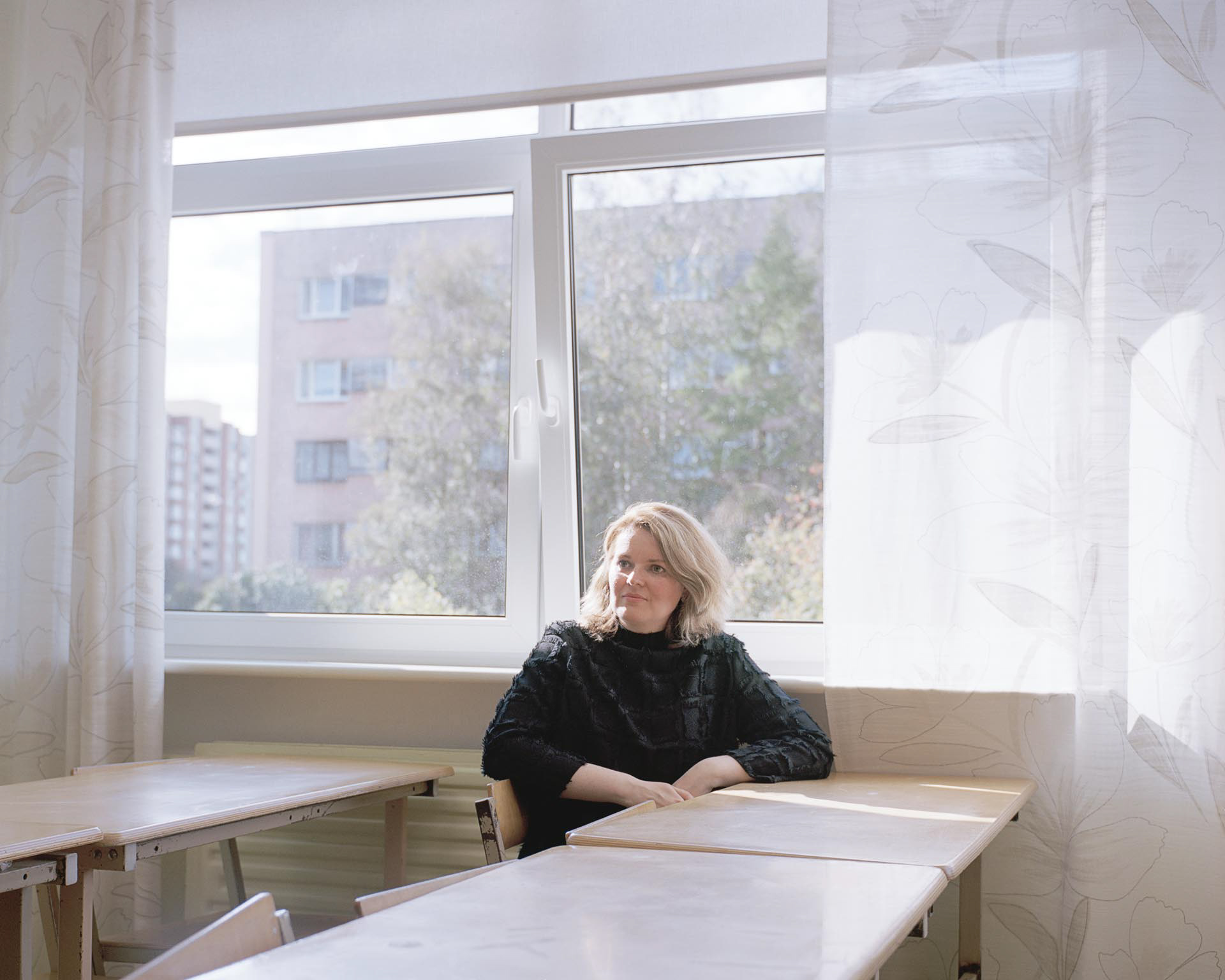
Jelena Shestak is a teacher of Estonian language in the Narva High School. Besides the teaching in the school, Jelena gives lectures and private lessons to Russophones who want to take the language proficiency exam required for Estonian citizenship
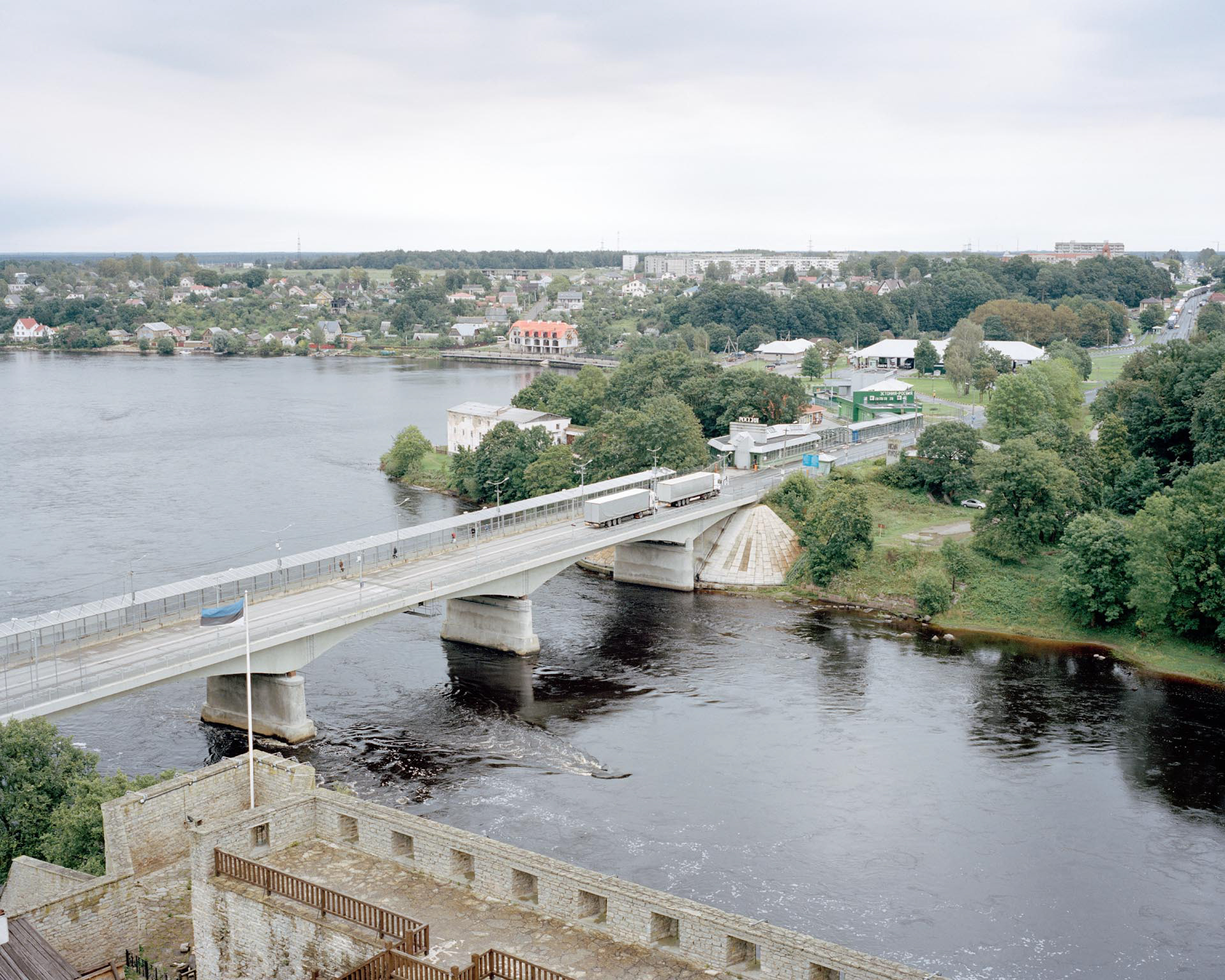
The Estonian-Russian border from the tower of the Narva castle. In the background the Russian twin city of Ivangorod
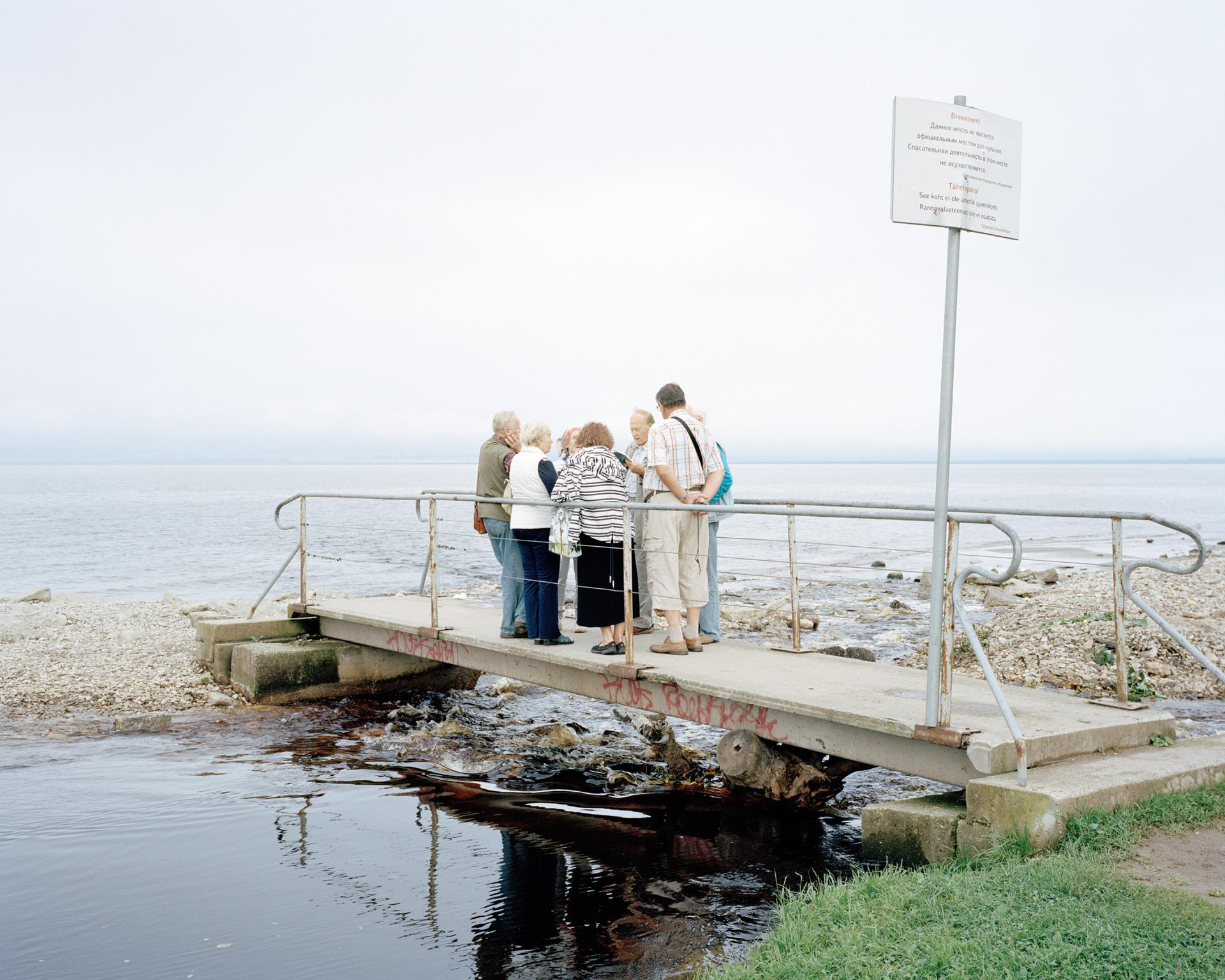
Overlooking the Baltic Sea, the city of Sillamäe has been an important industrial centre of the former U.S.S.R., producing military hardware and in particular in the uranium processing field. The whole industrial activity was kept under military secret and Sillamäe remained a closed town until the independence of Estonia in 1991: it didn't appear on official maps and its inhabitants weren't able to move outside without a specific authorization
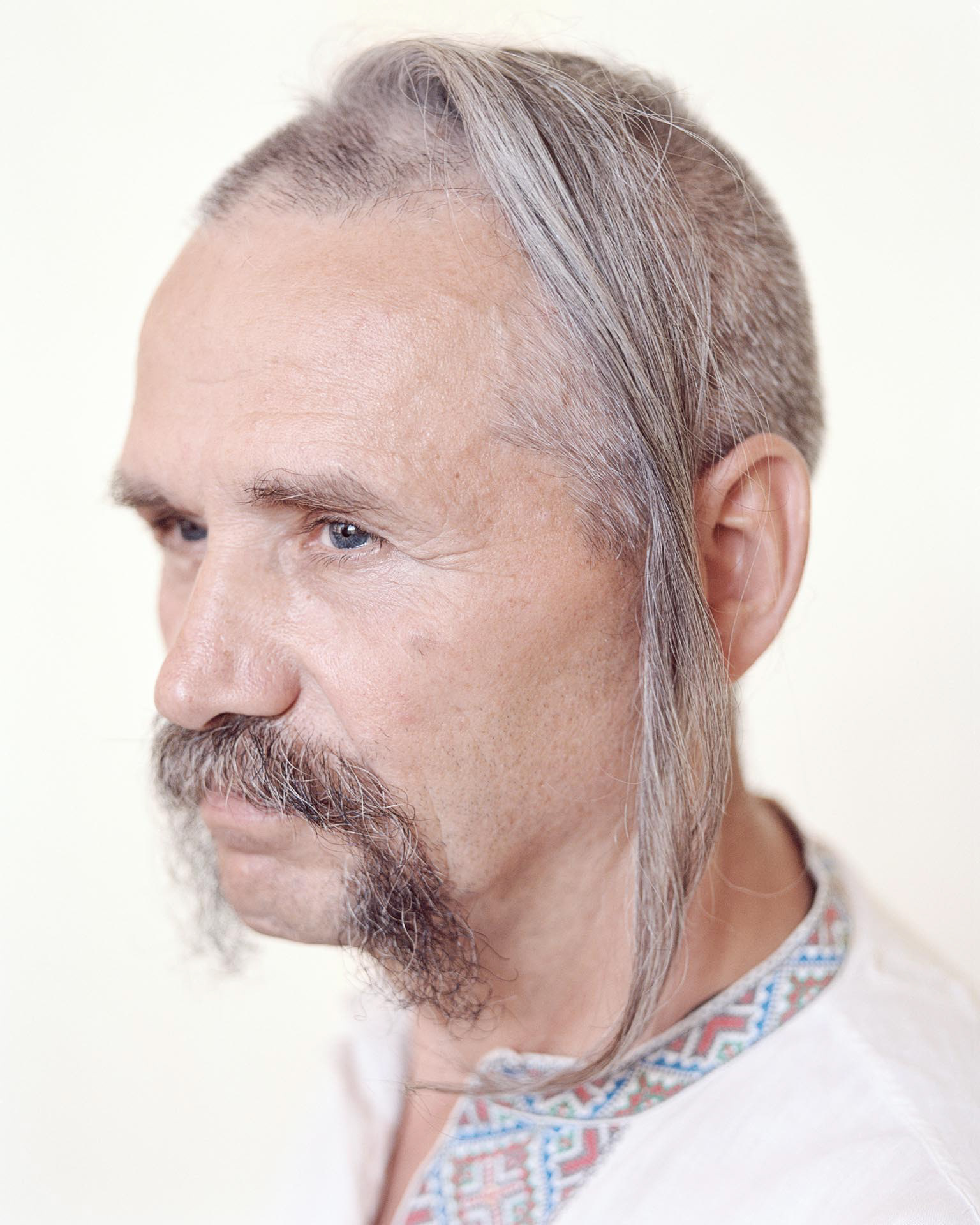
Borys Tutuka proudly claims his Ukrainian origin. Ukrainian people were transferred to Estonia during the Soviet period and today they are the second biggest Russophone minority of the country, Kohtla-Järve
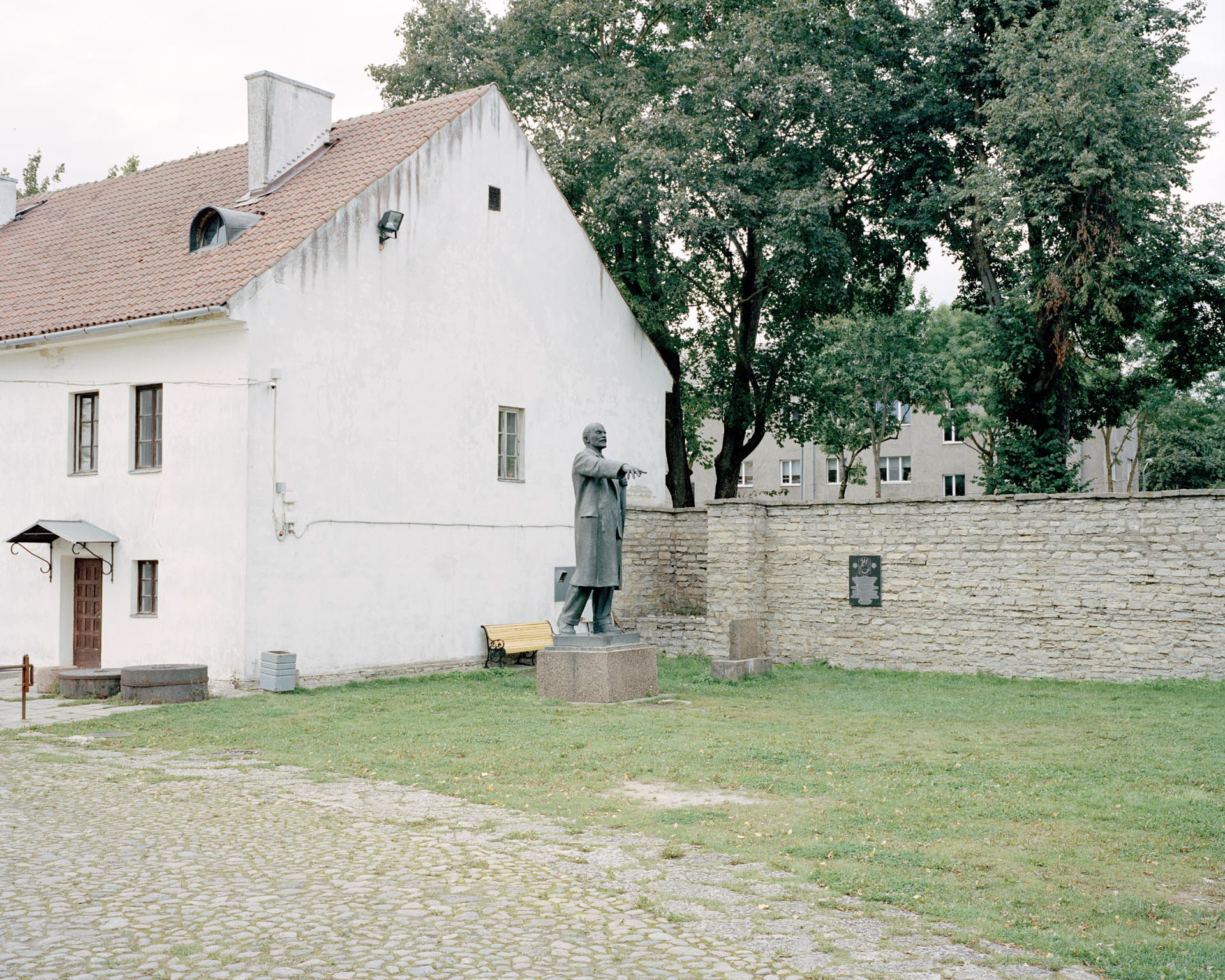
One of the very few statues of Lenin left within the European Union stands today in the courtyard of the Narva castle. The Russian communist revolutionary directs his look to the border, just a few meters away
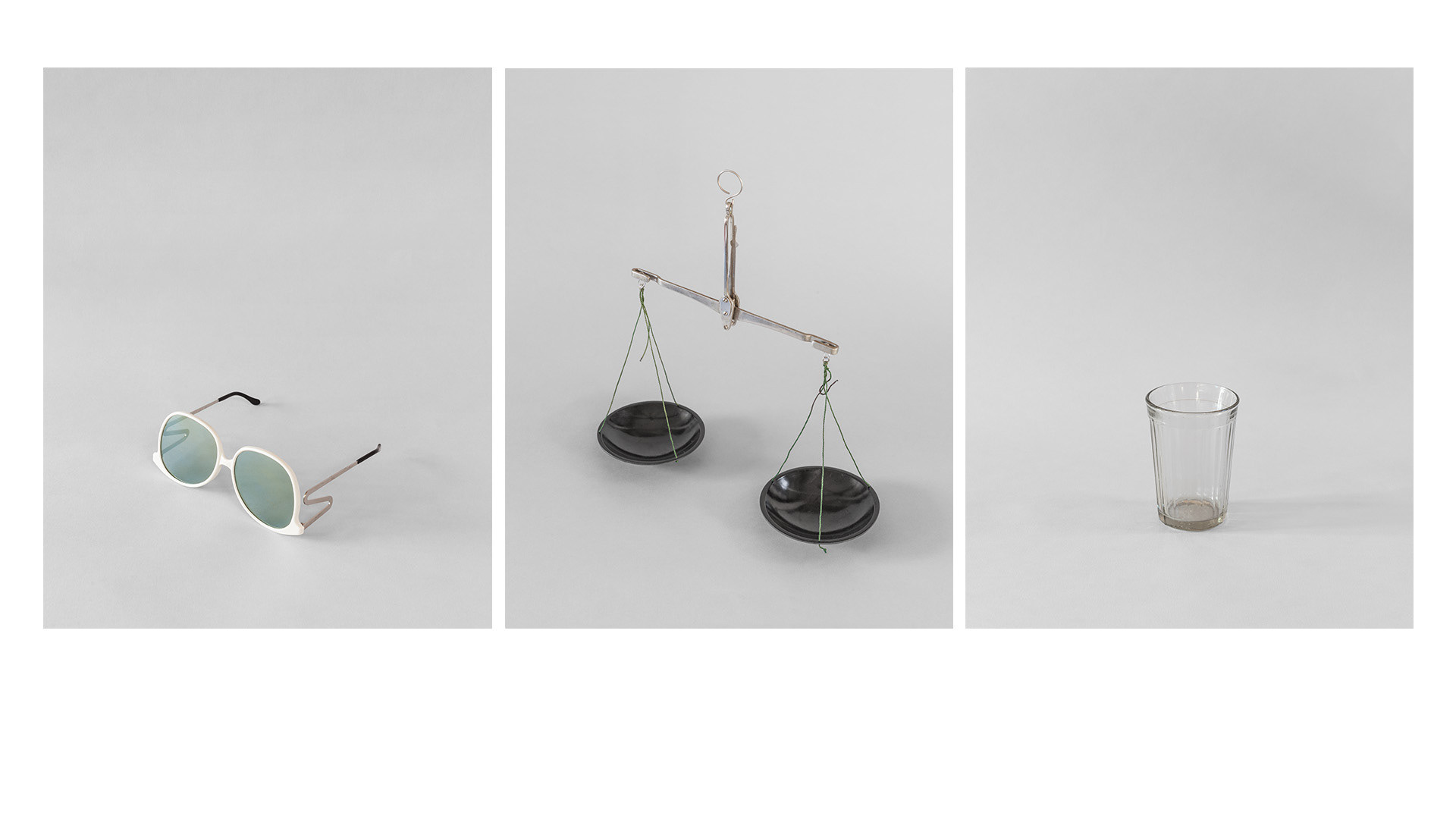
Everyday items found in situ belonging to the Soviet period
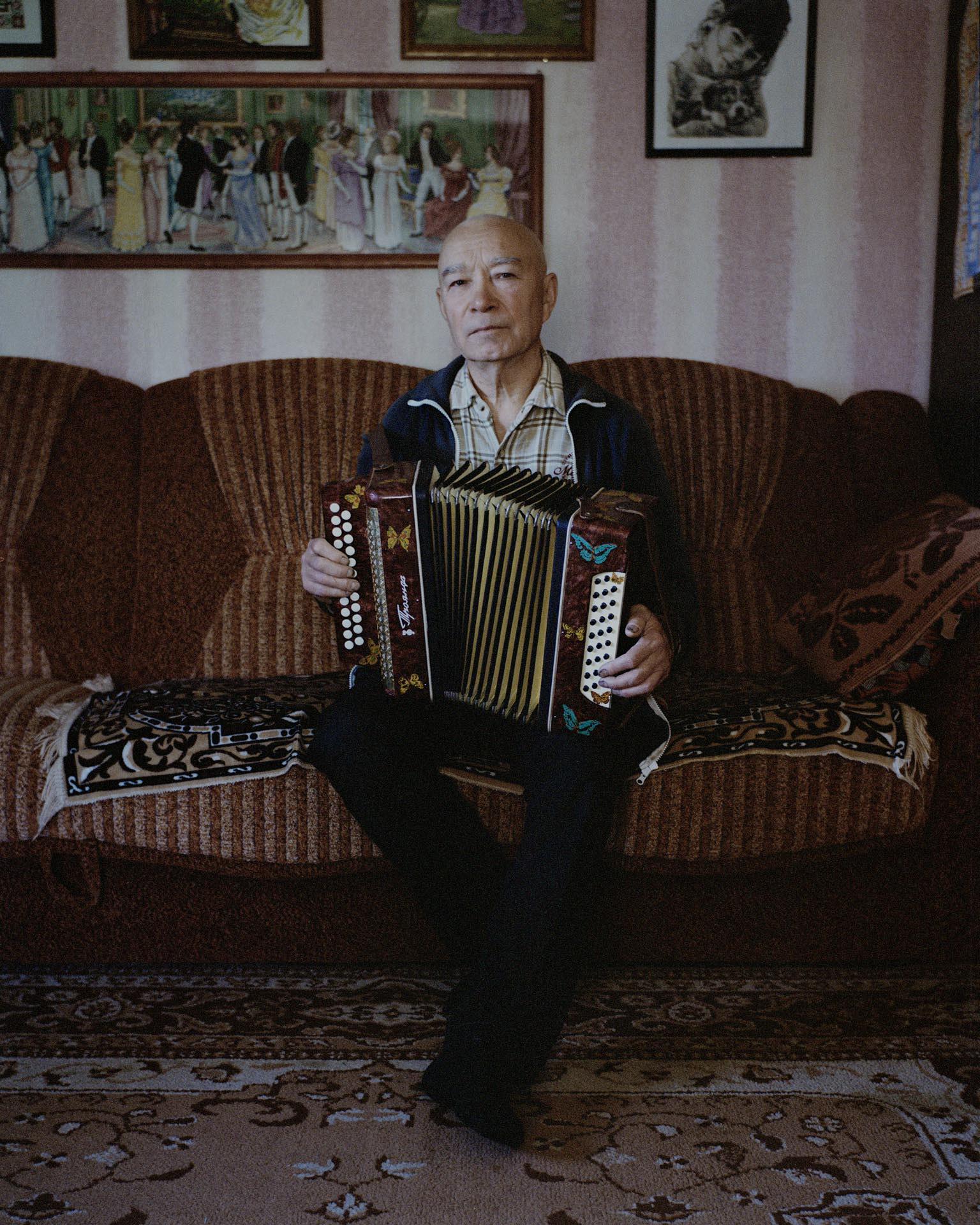
Sergej Tjahin came to Narva looking for a job in 1969 from Chuvashia, a region in the center of European Russia
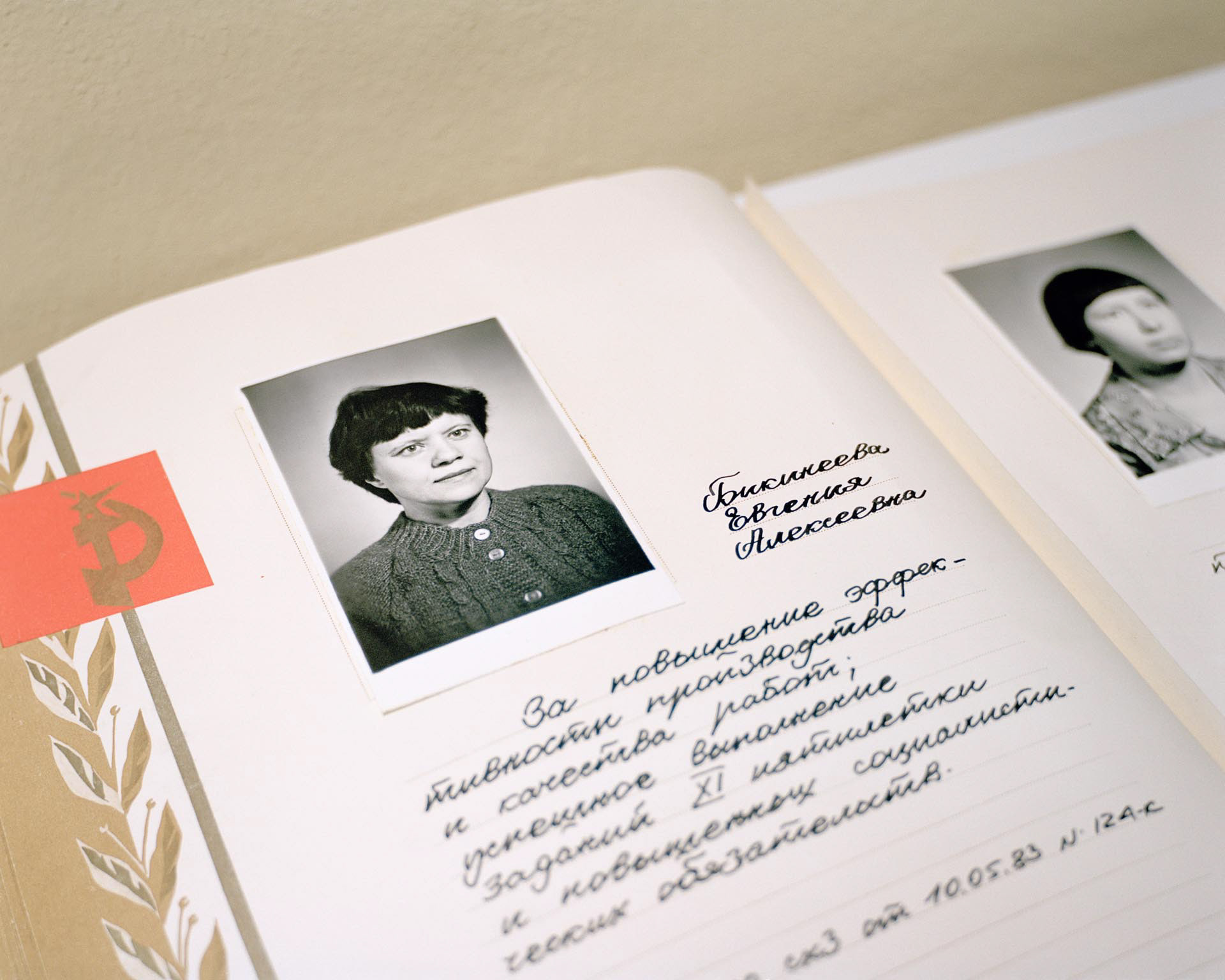
Inside the Sillamäe Cultural Centre is hidden a fallout shelter, where today all sorts of items from the Soviet period are kept, together with souvenirs and memorabilia, like this book collecting champions and sport heros of the city
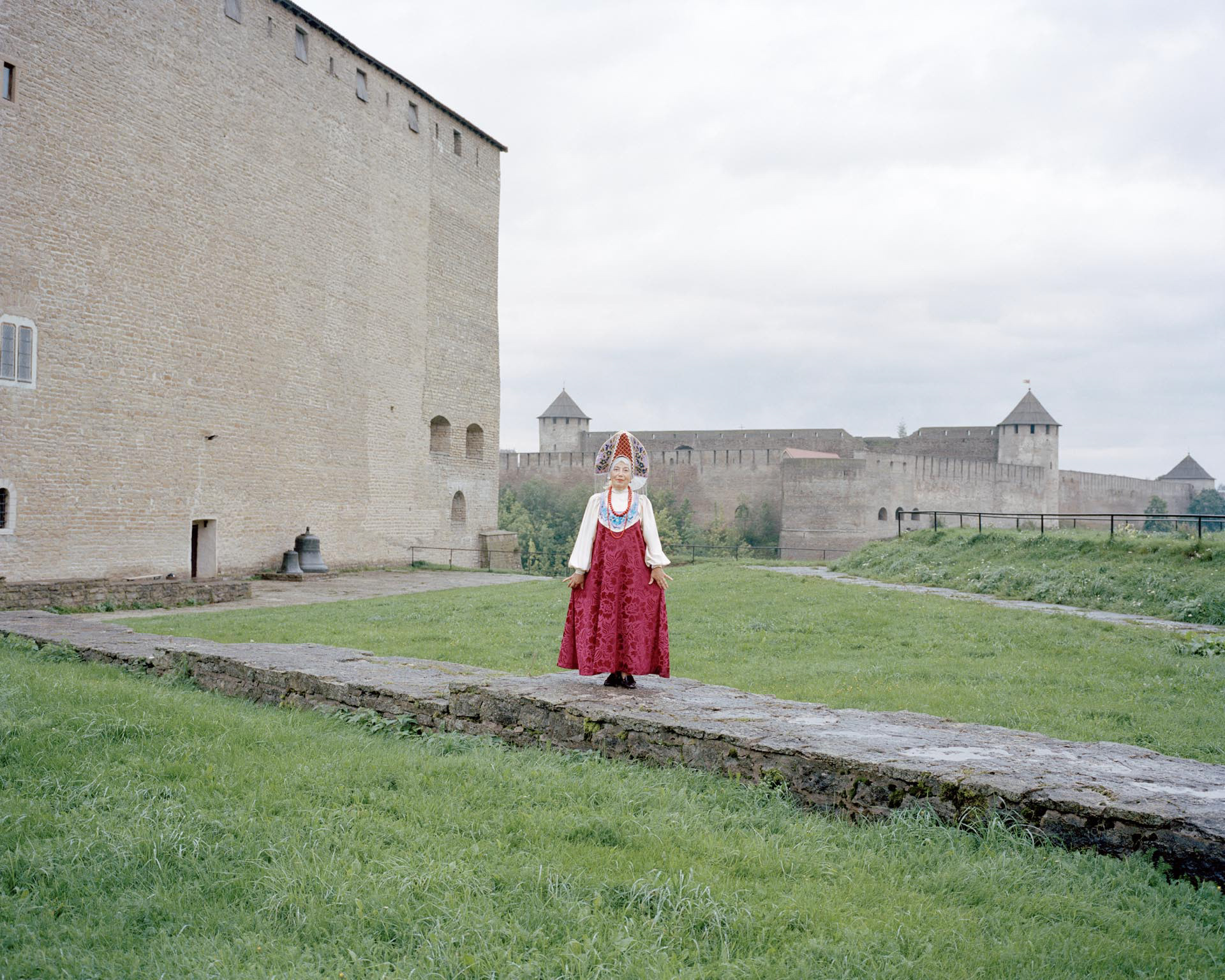
Alla Matveeva wearing traditional Russian clothes. Alla is the director of Svätogor, one of the slavic cultural centres of Narva, which has the aim of spreading and preserving the Russian traditions in the Ida-Viru county
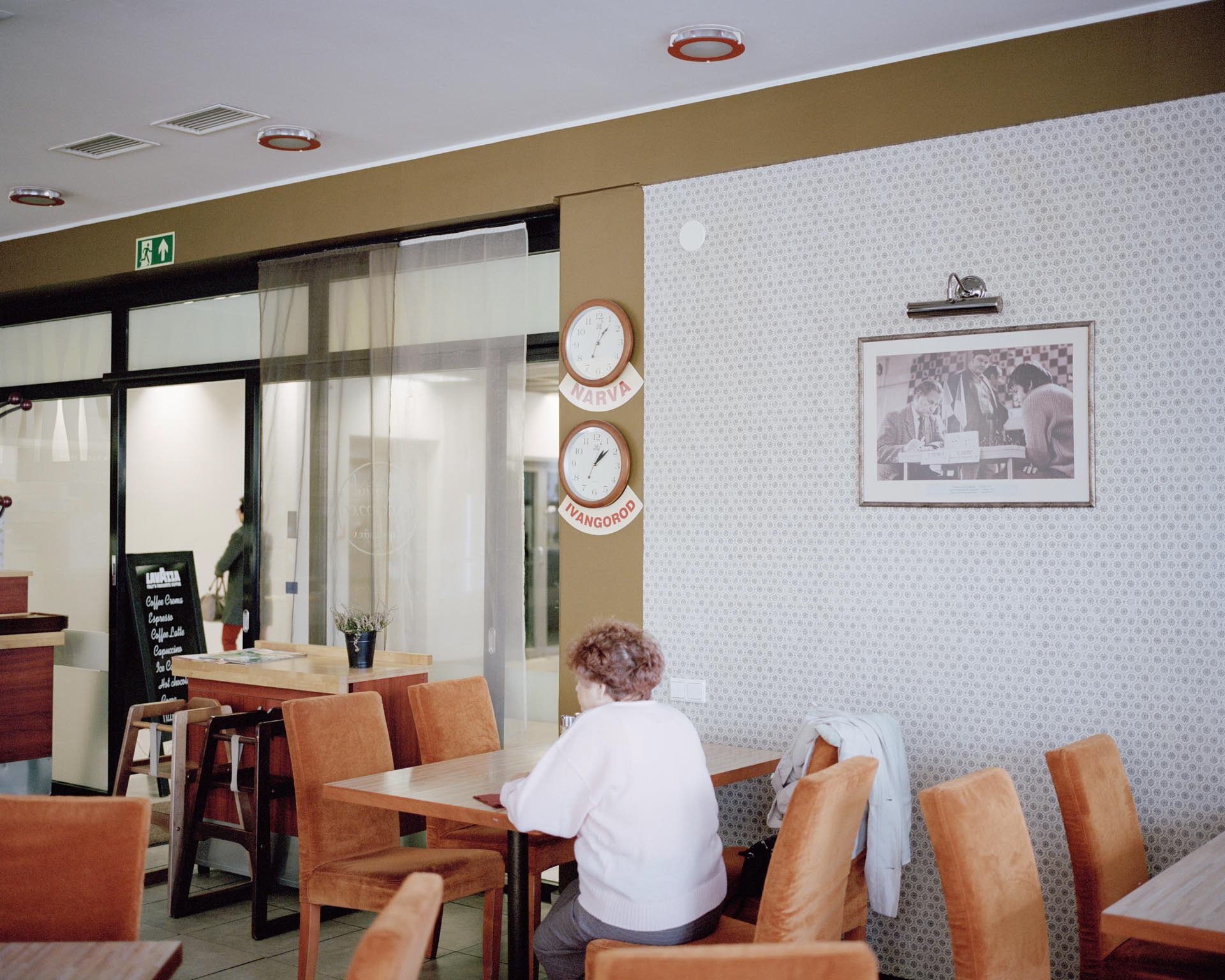
One of the few cafés in Narva. Its twin city, Ivangorod, lies seamlessly after the border with Russia
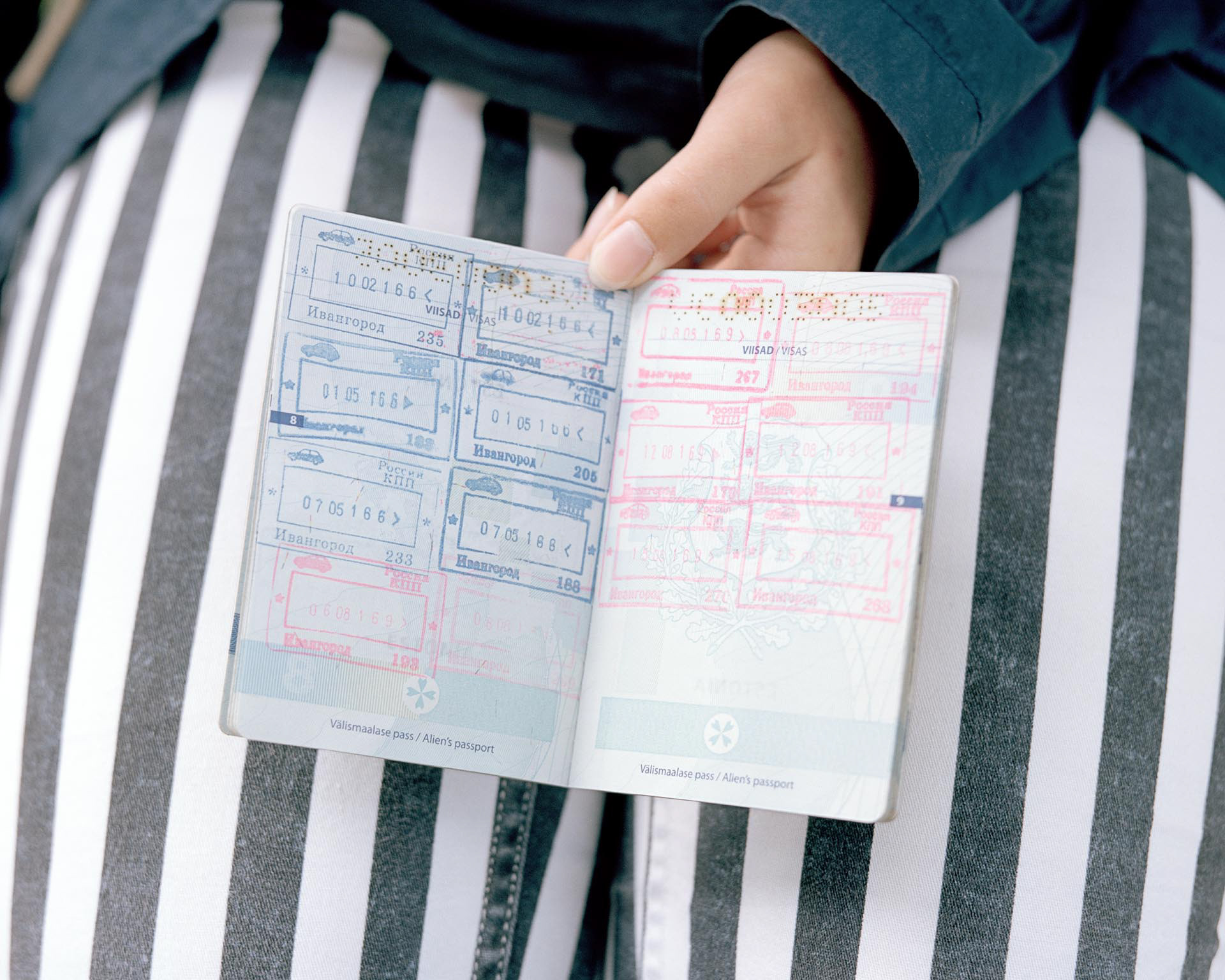
A grey passport, the one for stateless persons, grants anyway access to Russia and a maximum of 90 days of stay
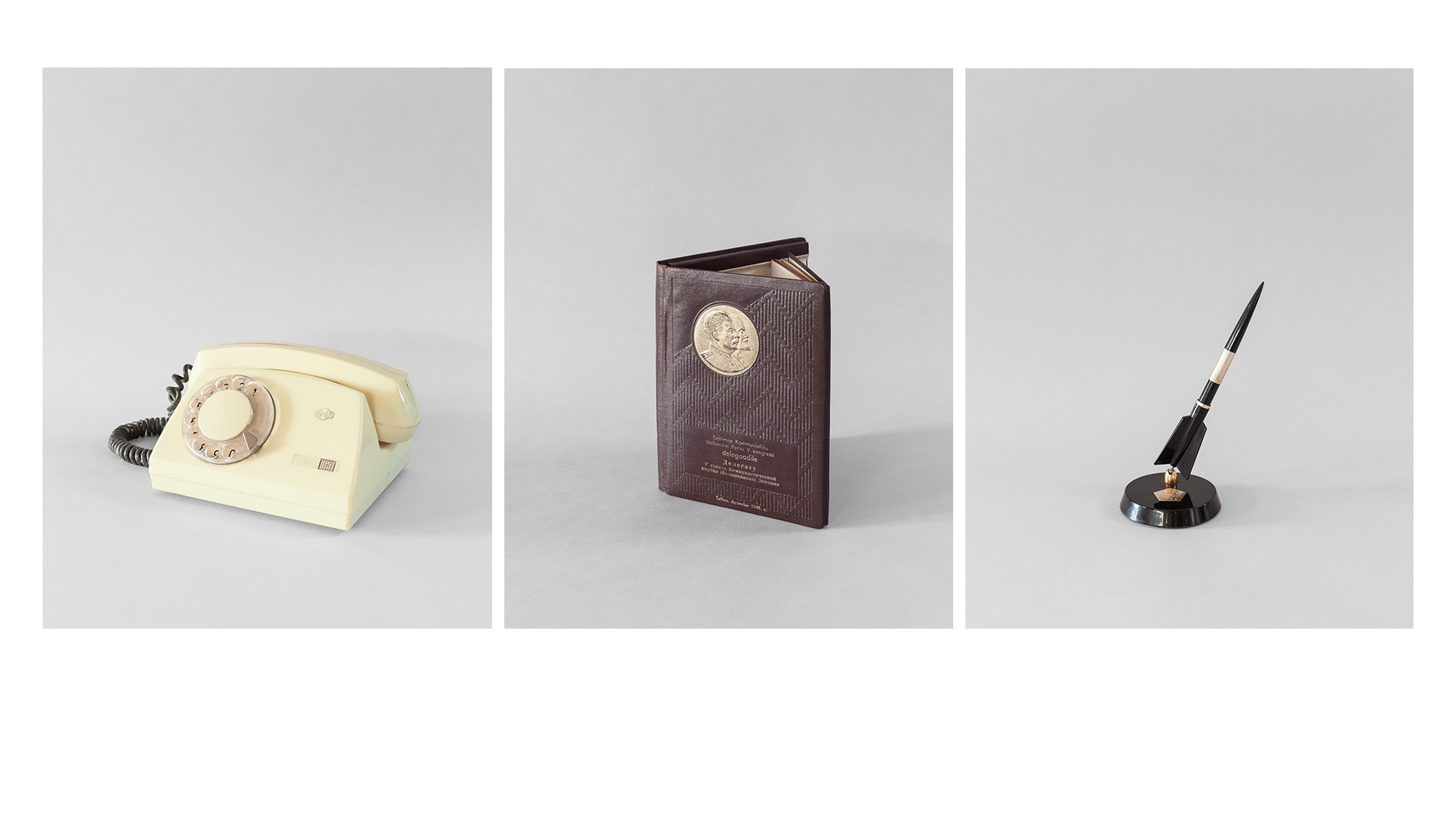
Everyday items found in situ belonging to the Soviet period
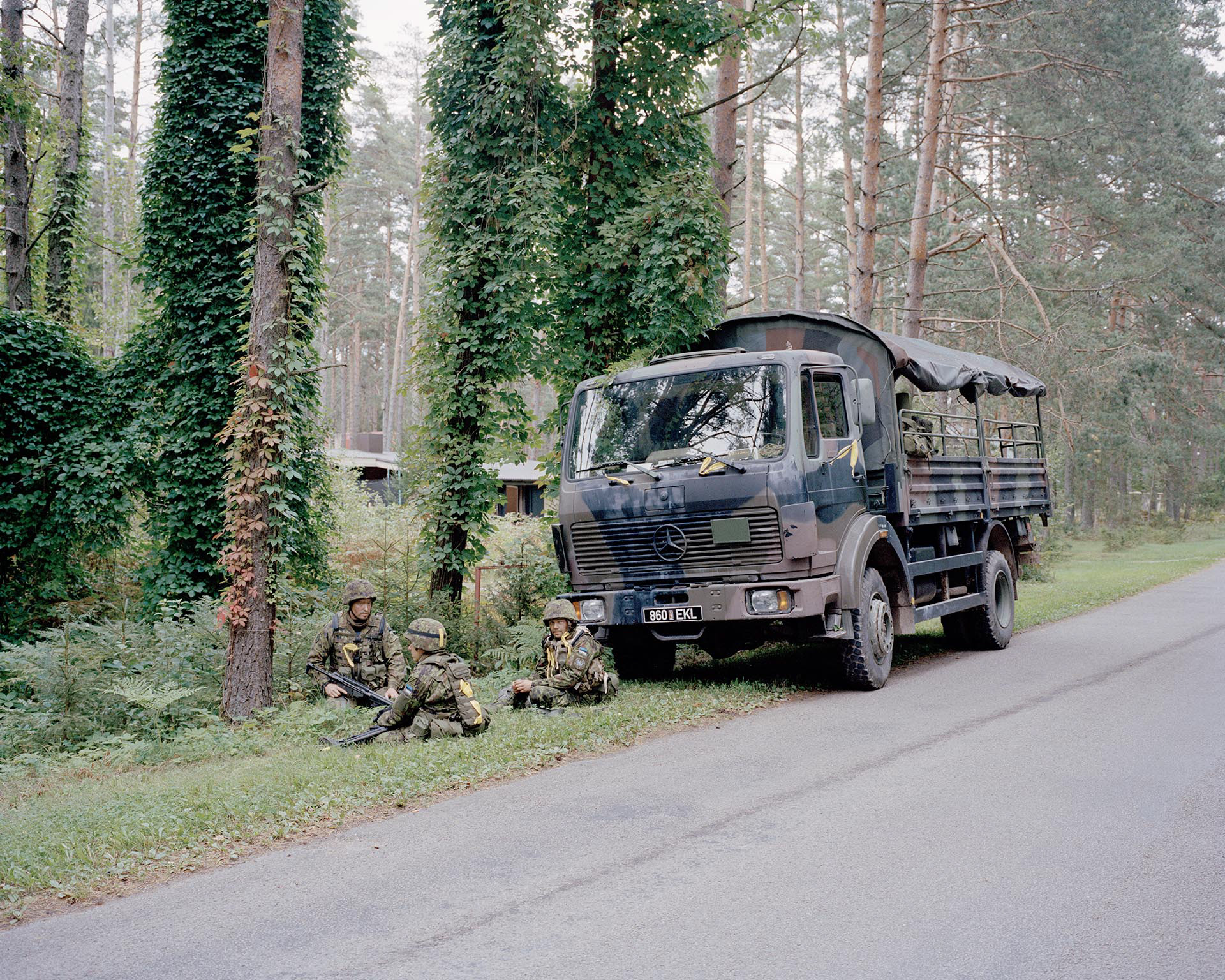
Soldiers of the Estonian Army during military training in the forest. Exercises are held quite often in order to keep the Army ready to defend the country from an attack by Russia, Uusküla
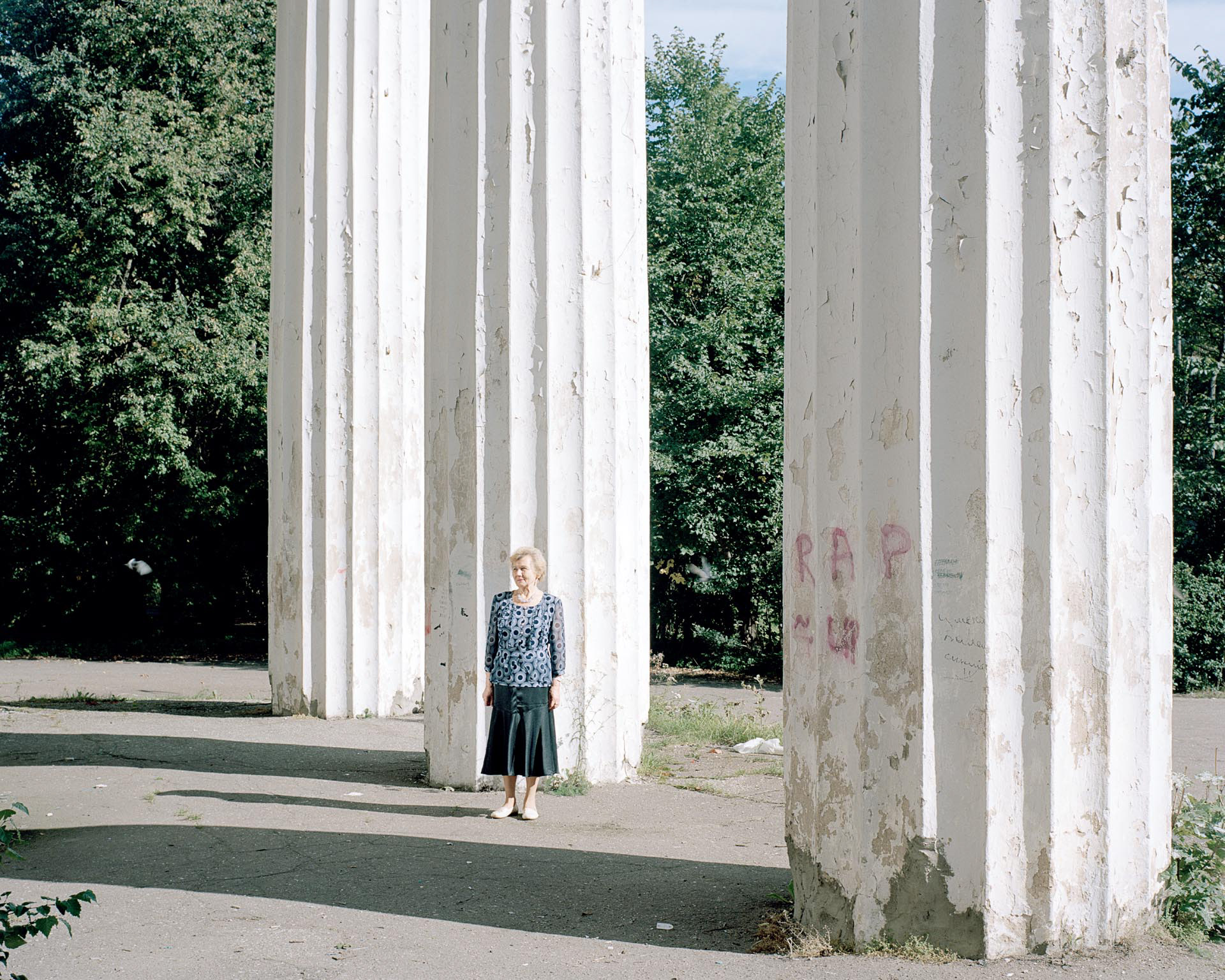
Zoya Nikolaeva has worked in the Kreenholm textile factory of Narva (the biggest one of the city) until the collapse of the U.S.S.R. and the consequent closing down of the business
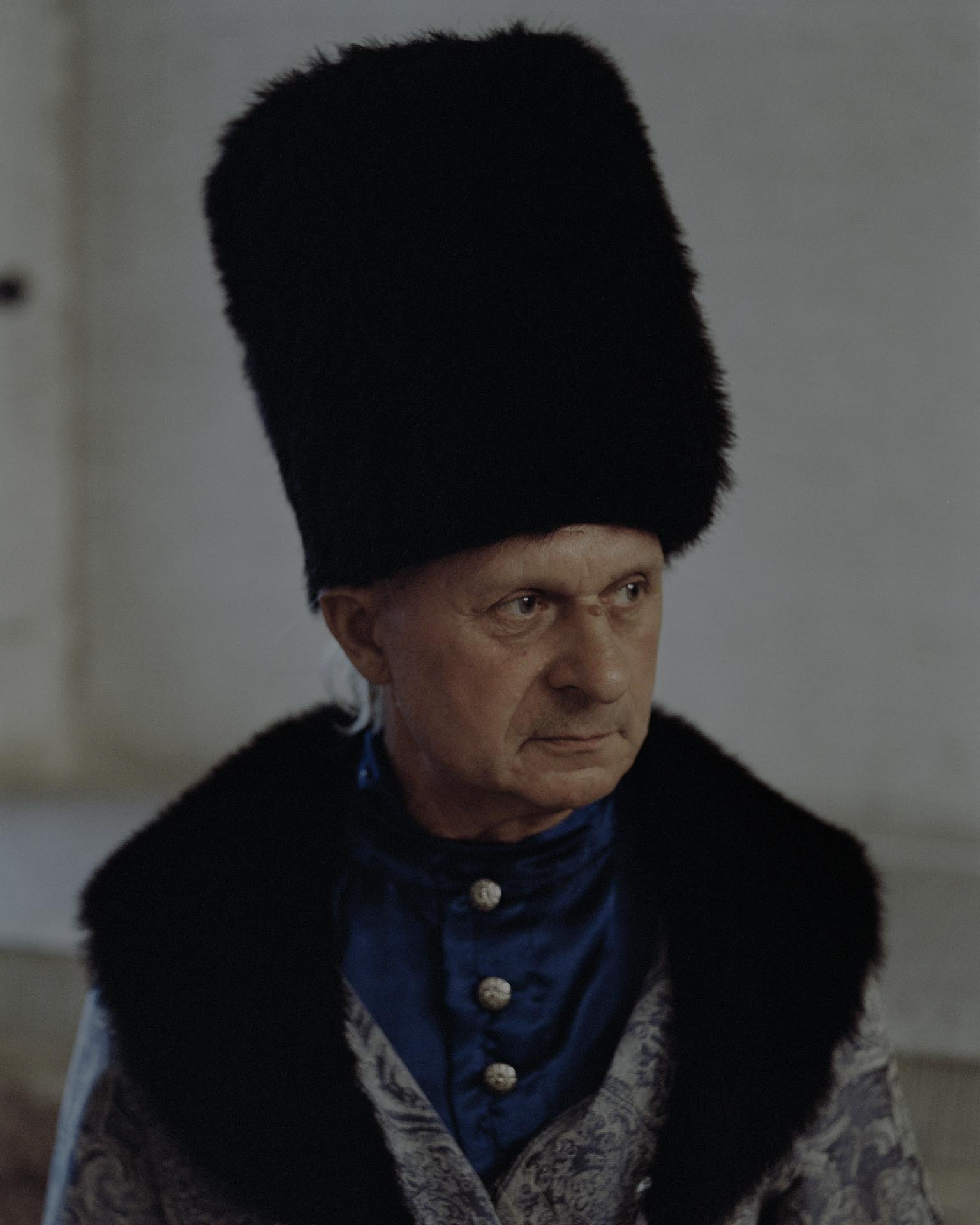
A Russian actor of the Svätogor company before the beginning of a show
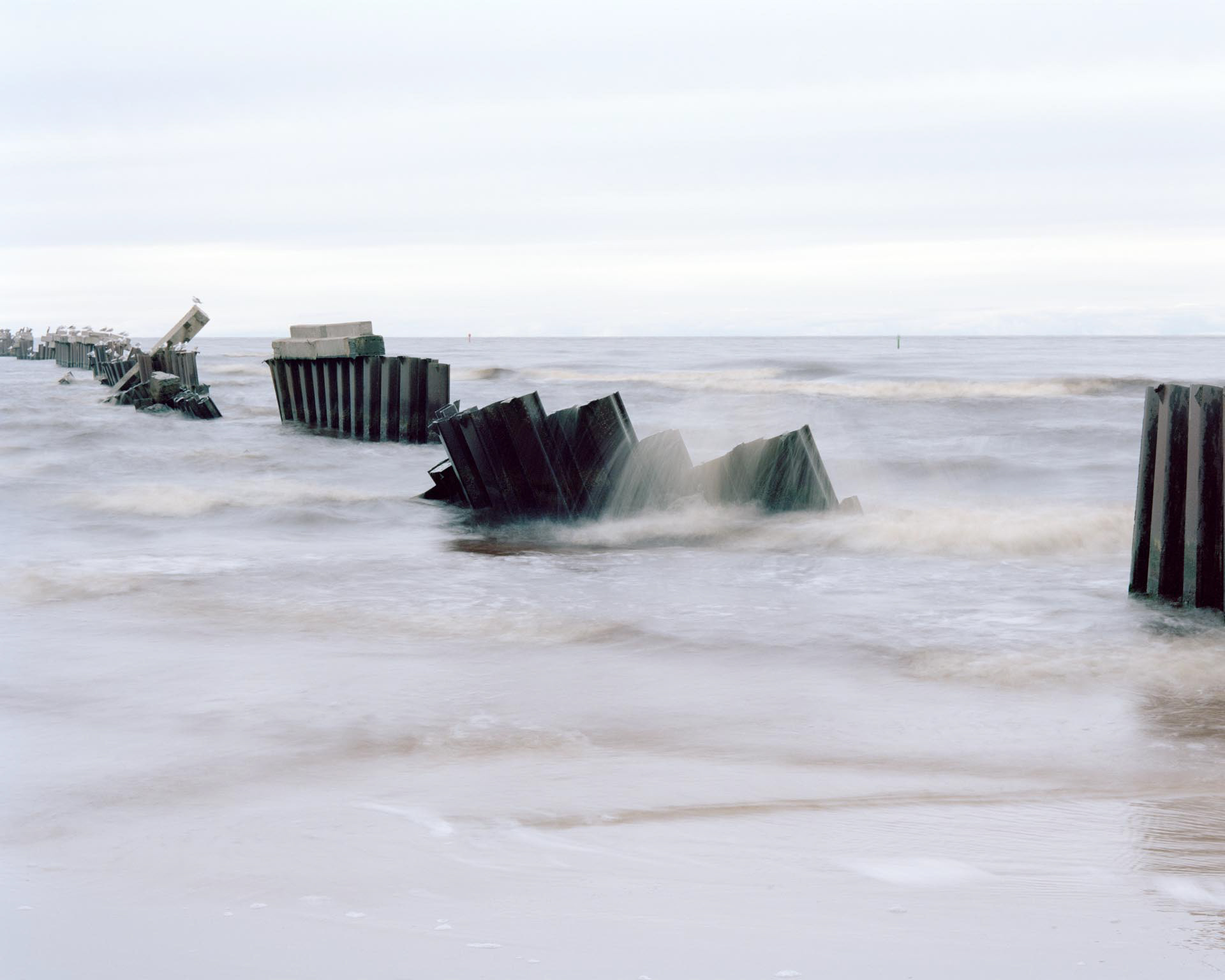
The Estonian-Russian border crosses the Baltic Sea, north of the touristic town of Narva-Jõesuu. The area has long been a popular summer destination, especially during the Soviet period, when it was visited in large numbers by representatives of the Russian intelligentsia and local people
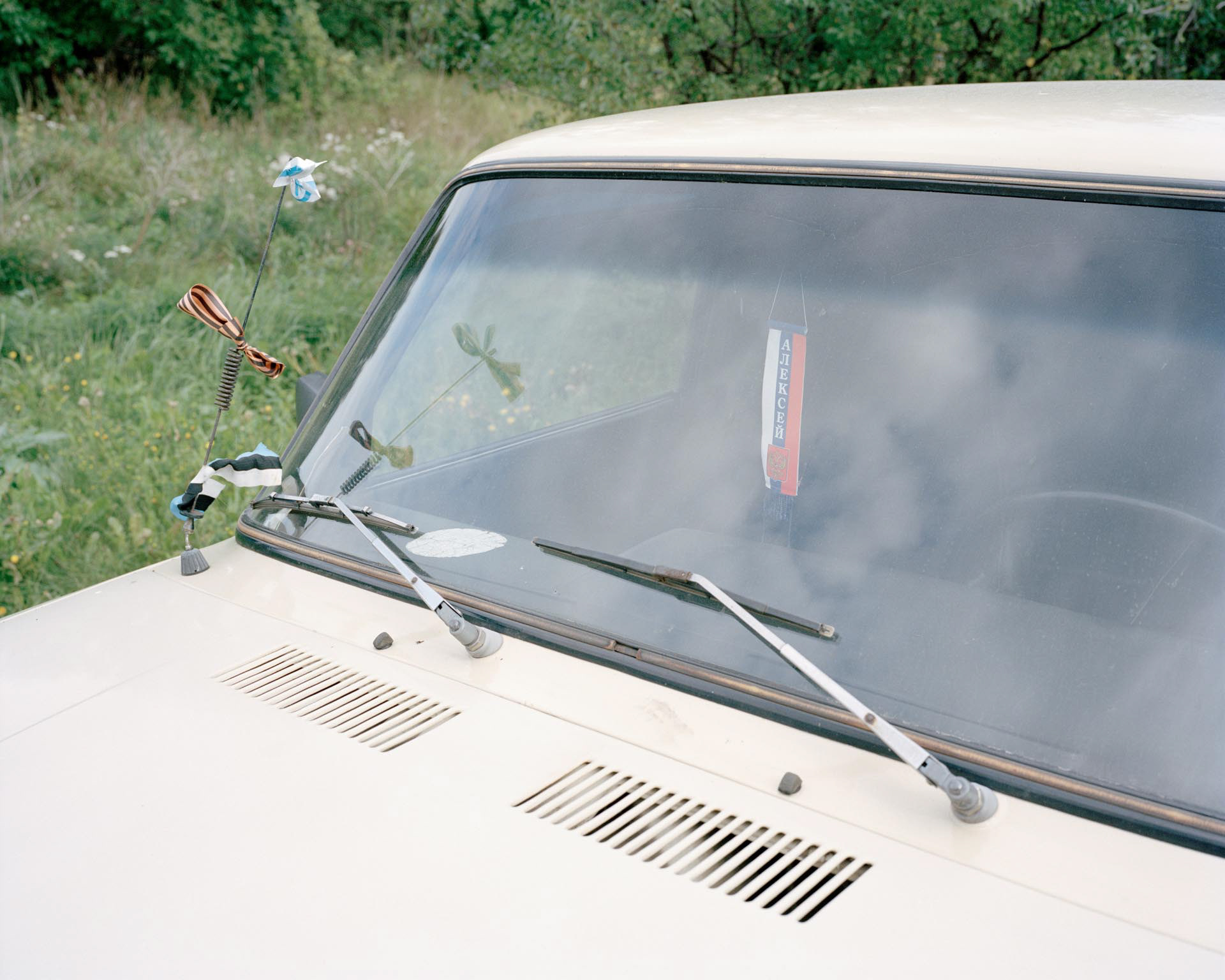
Sillamäe
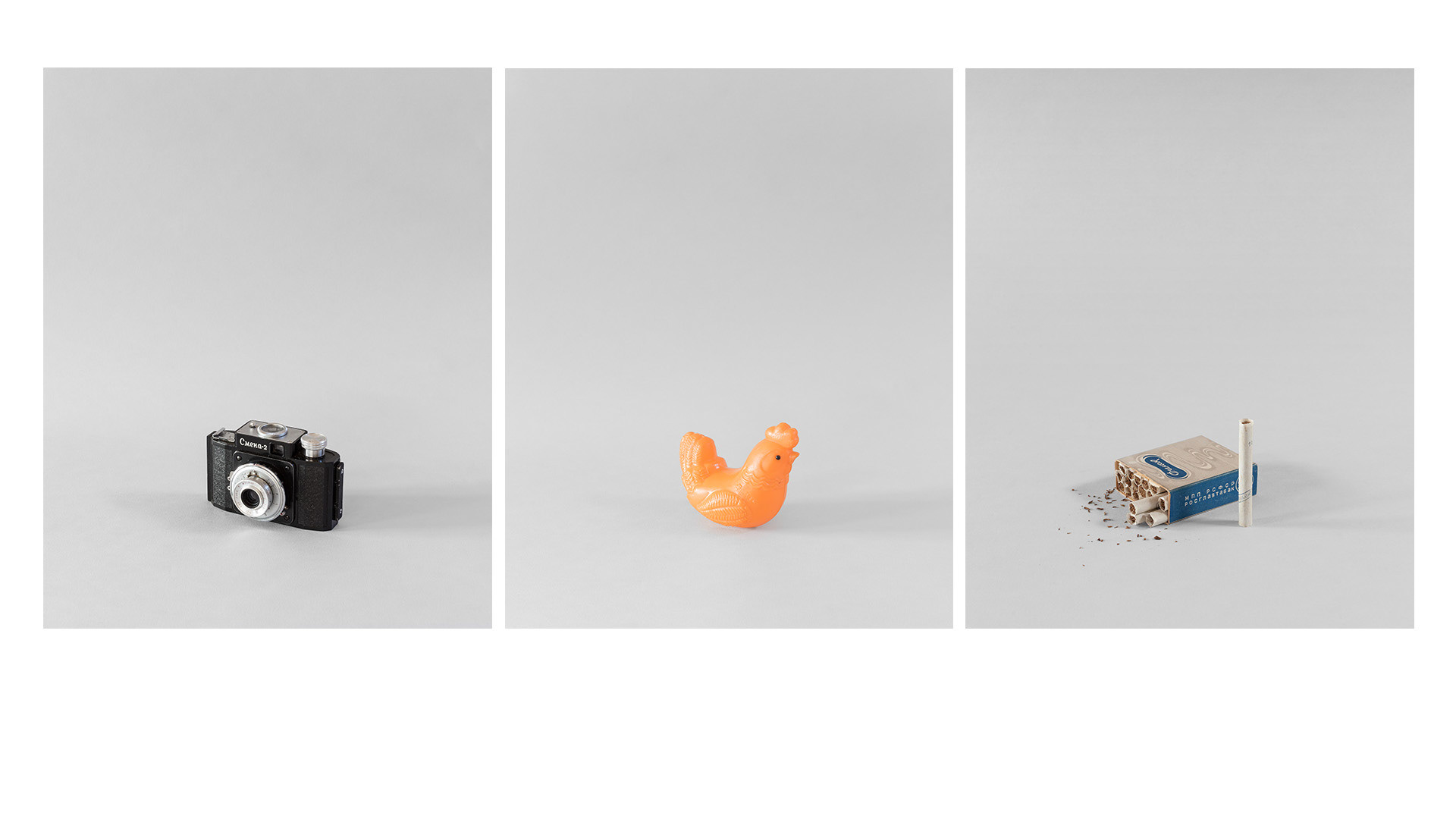
Everyday items found in situ belonging to the Soviet period
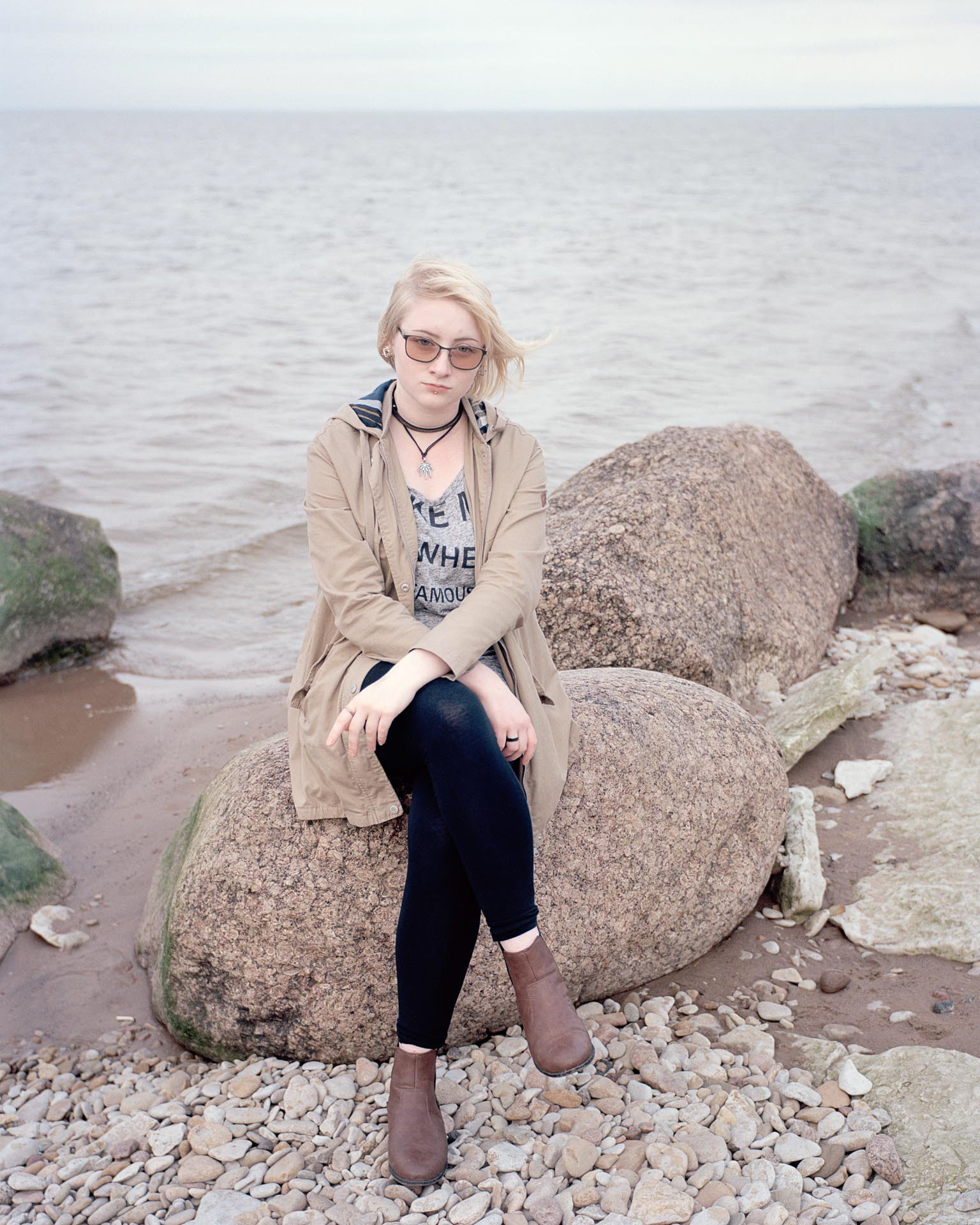
Jana, 18, on the Sillamäe beach
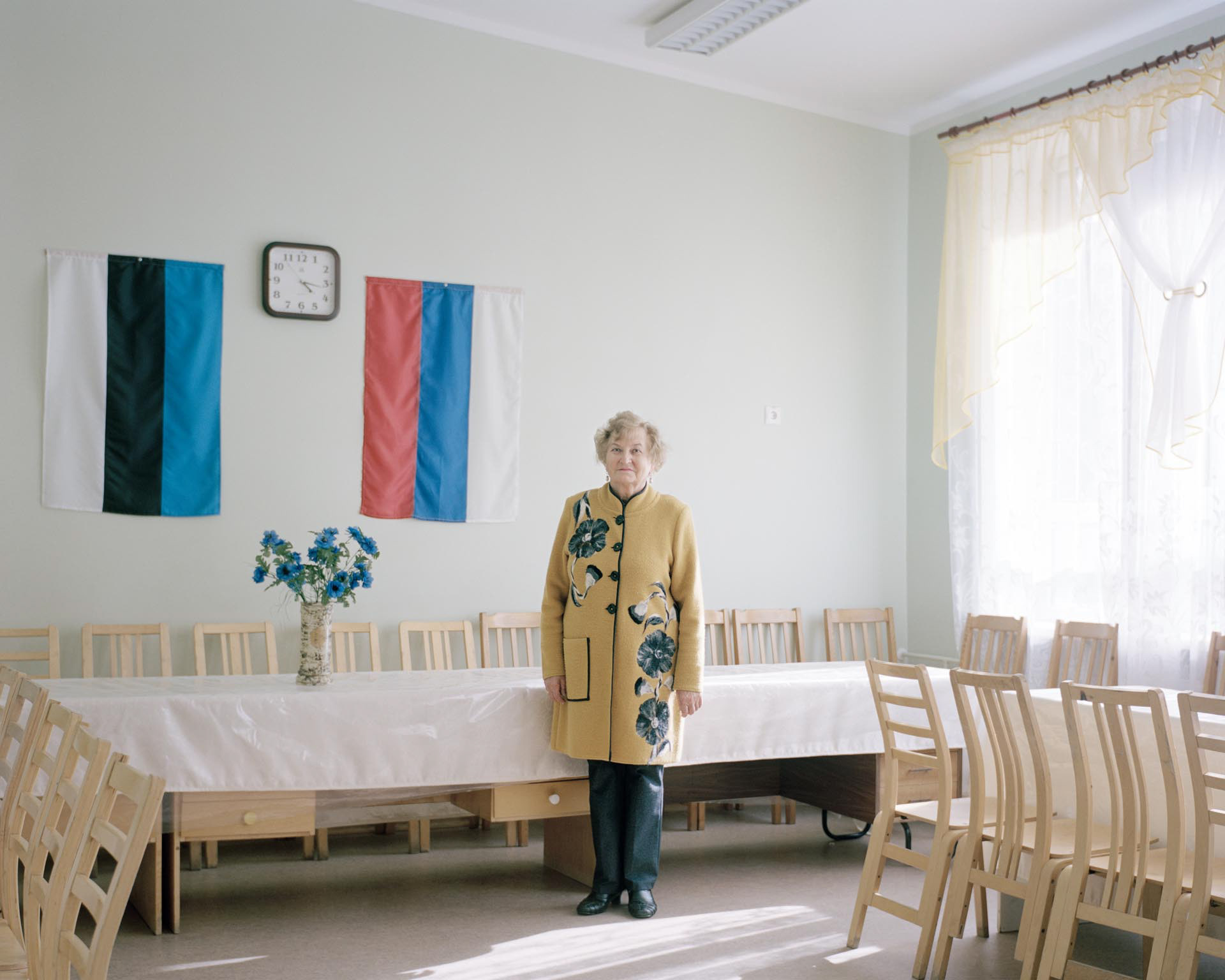
Albina Pugatsenko inside the meeting room of the Russian cultural organization Nadezda, the biggest in Narva. She is the President of the association
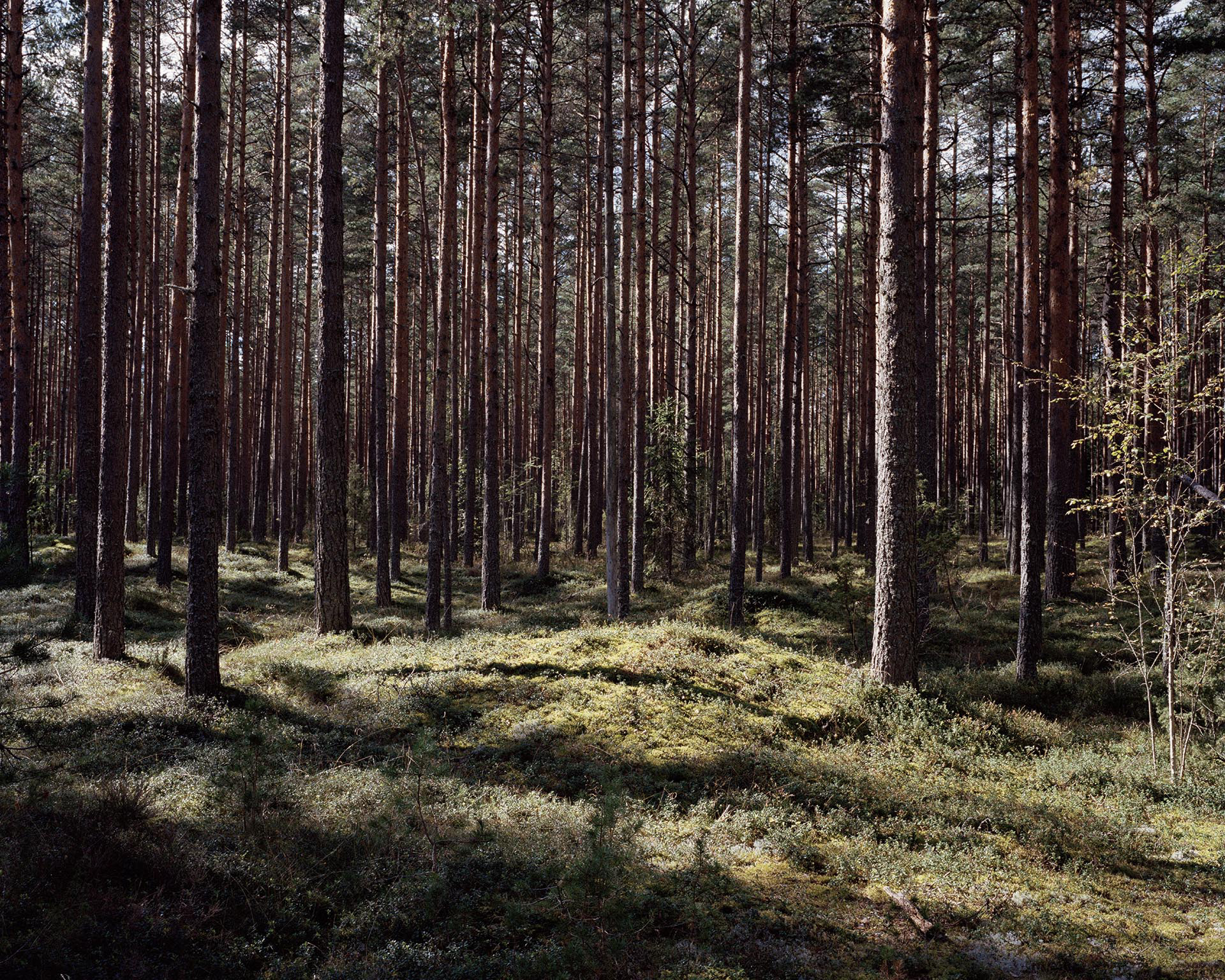
Spruce pine forests near the shores of Peipsi lake
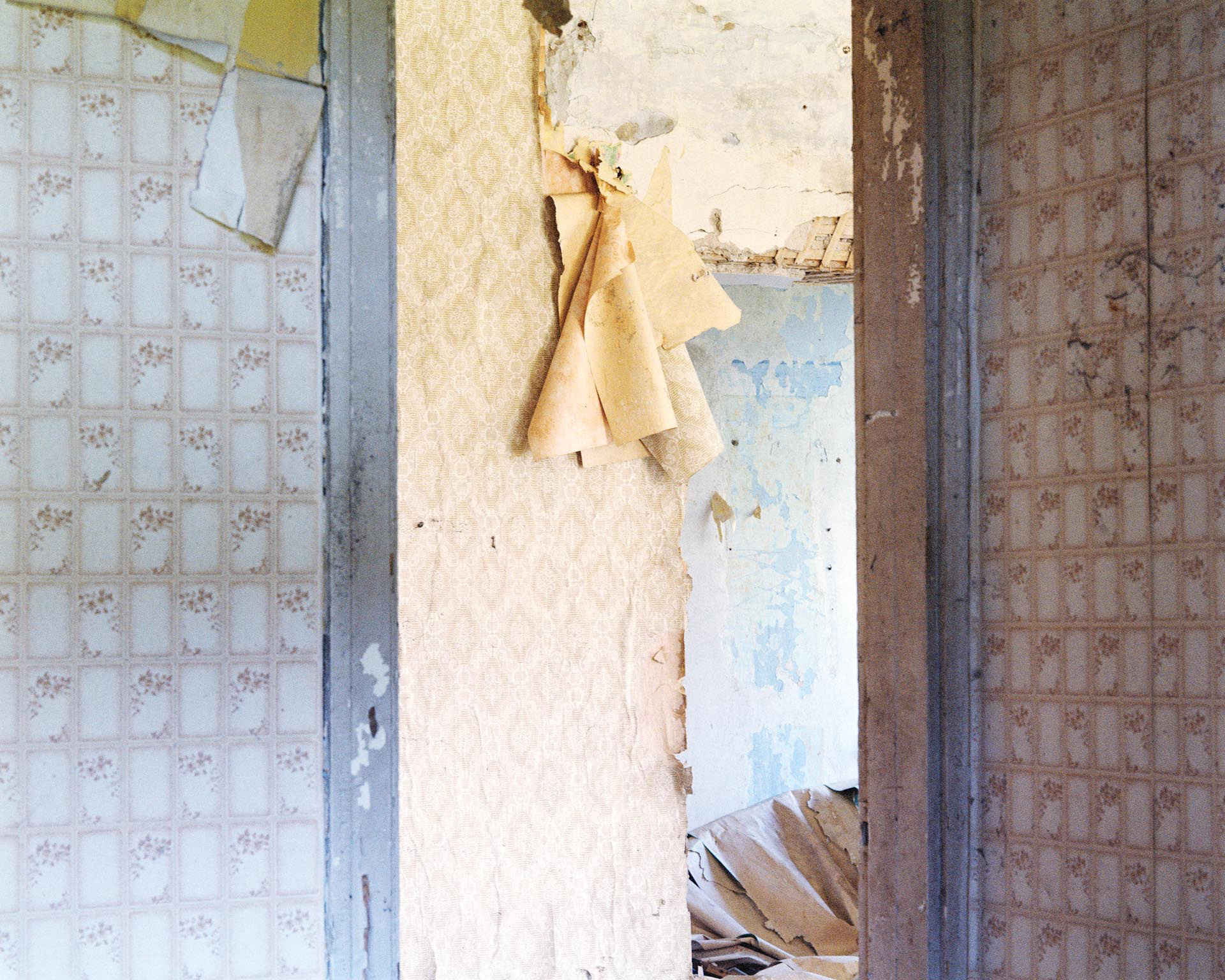
Inside a house in Viivikonna. Viivikonna is a rural village of Ida-Viru county that boomed, back in the 60s, after the opening of some sorrounding shale mines. A lot of workers first moved there and then quit the village after all the mines have been closed. Today the village is almost abandoned
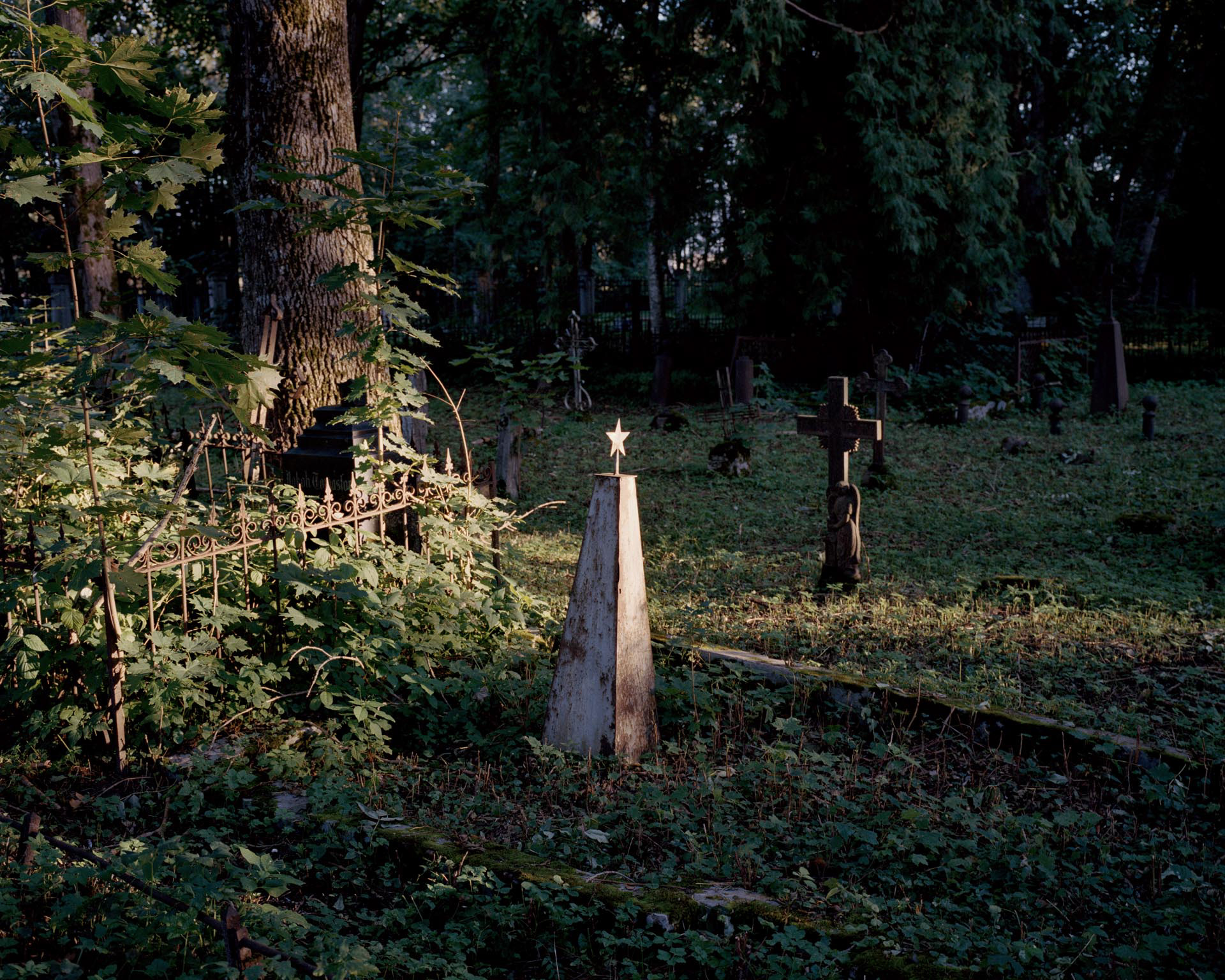
A tomb of a soviet soldier in the Narva cemetery
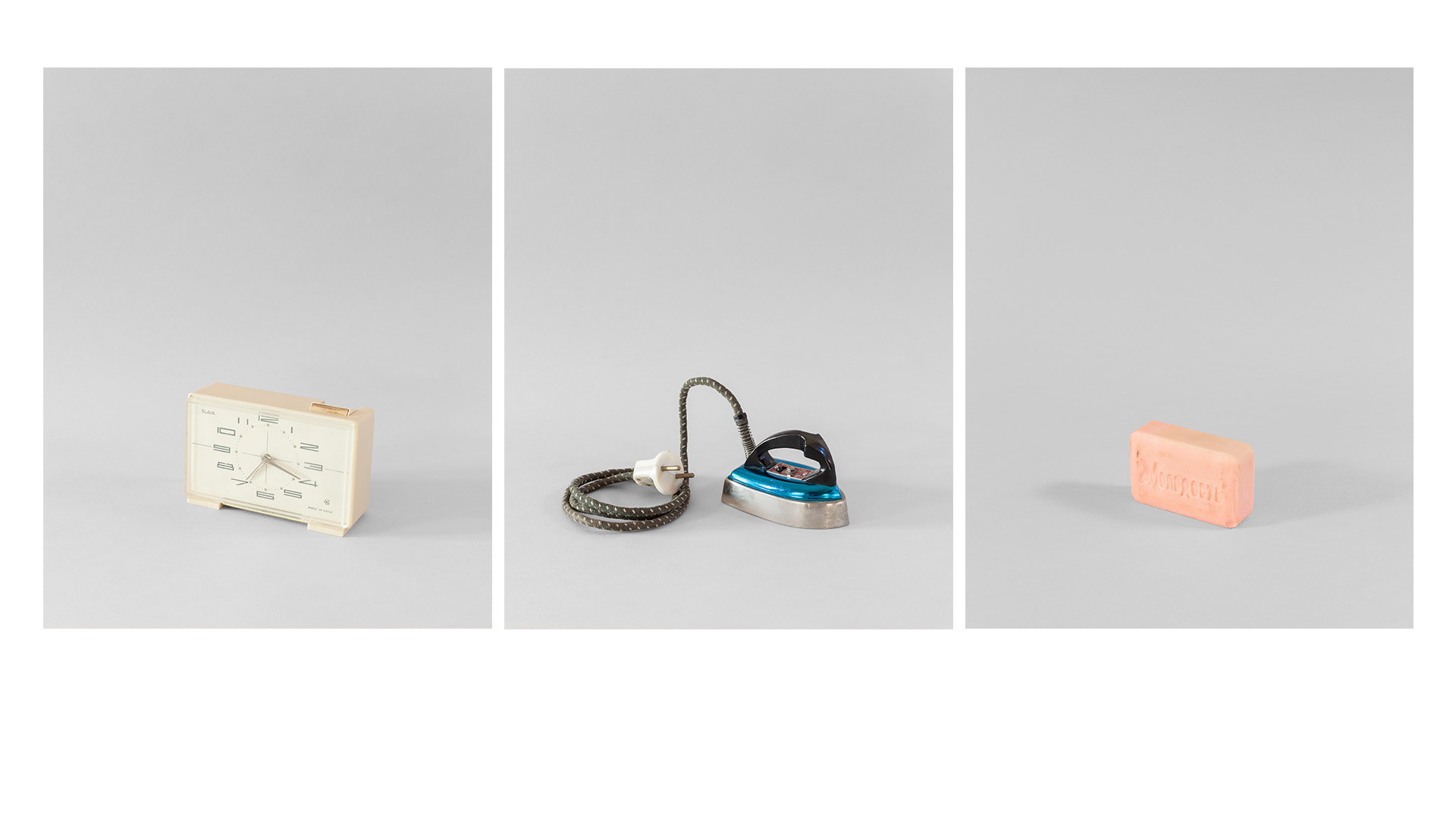
Everyday items found in situ belonging to the Soviet period
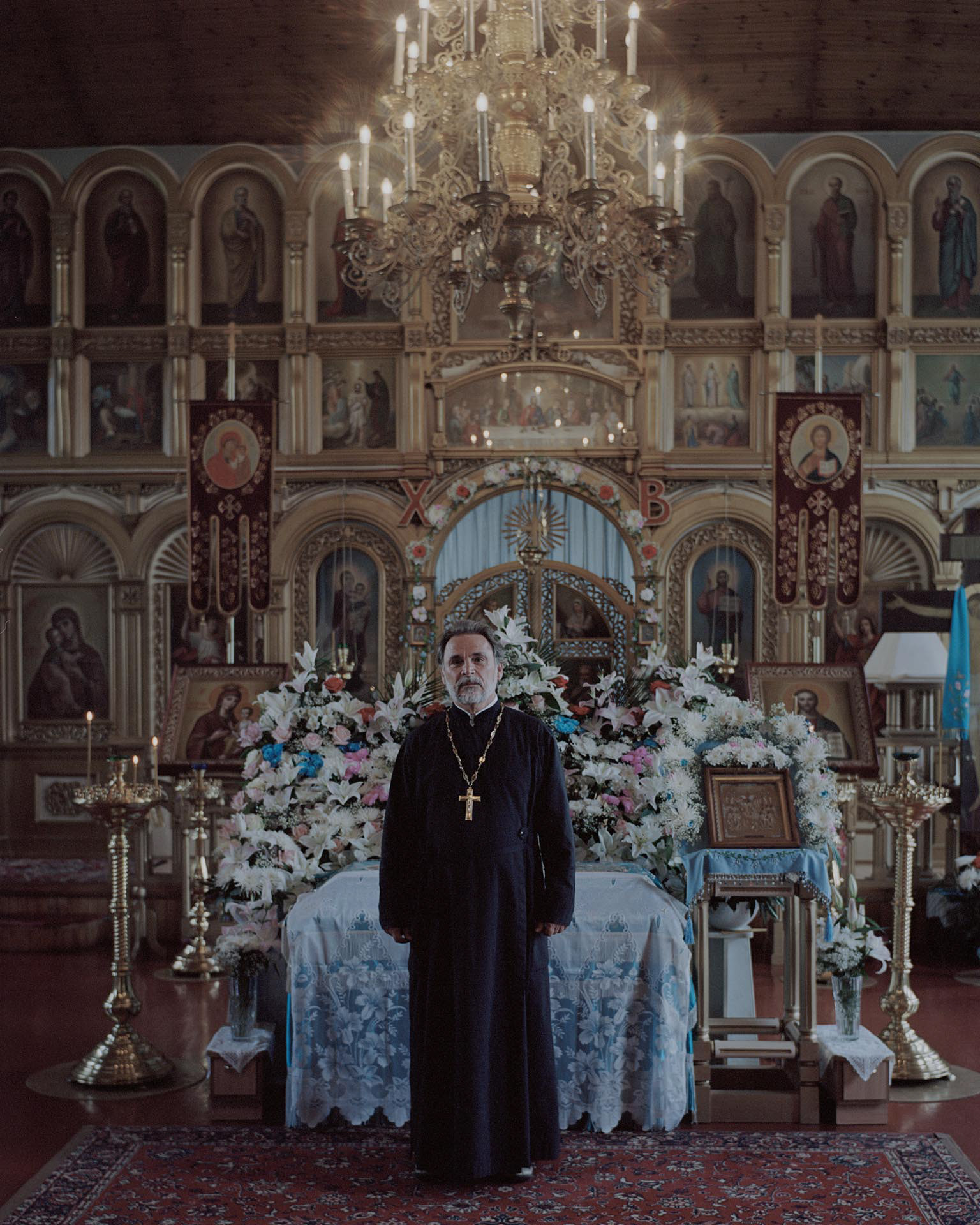
Estonia is one of the least religious countries in the world. The second religious group of the country is represented by the Orthodox Church, to which the Russian minority belongs to. Vladimir Lihhatšov is the Archipriest of Sillamäe
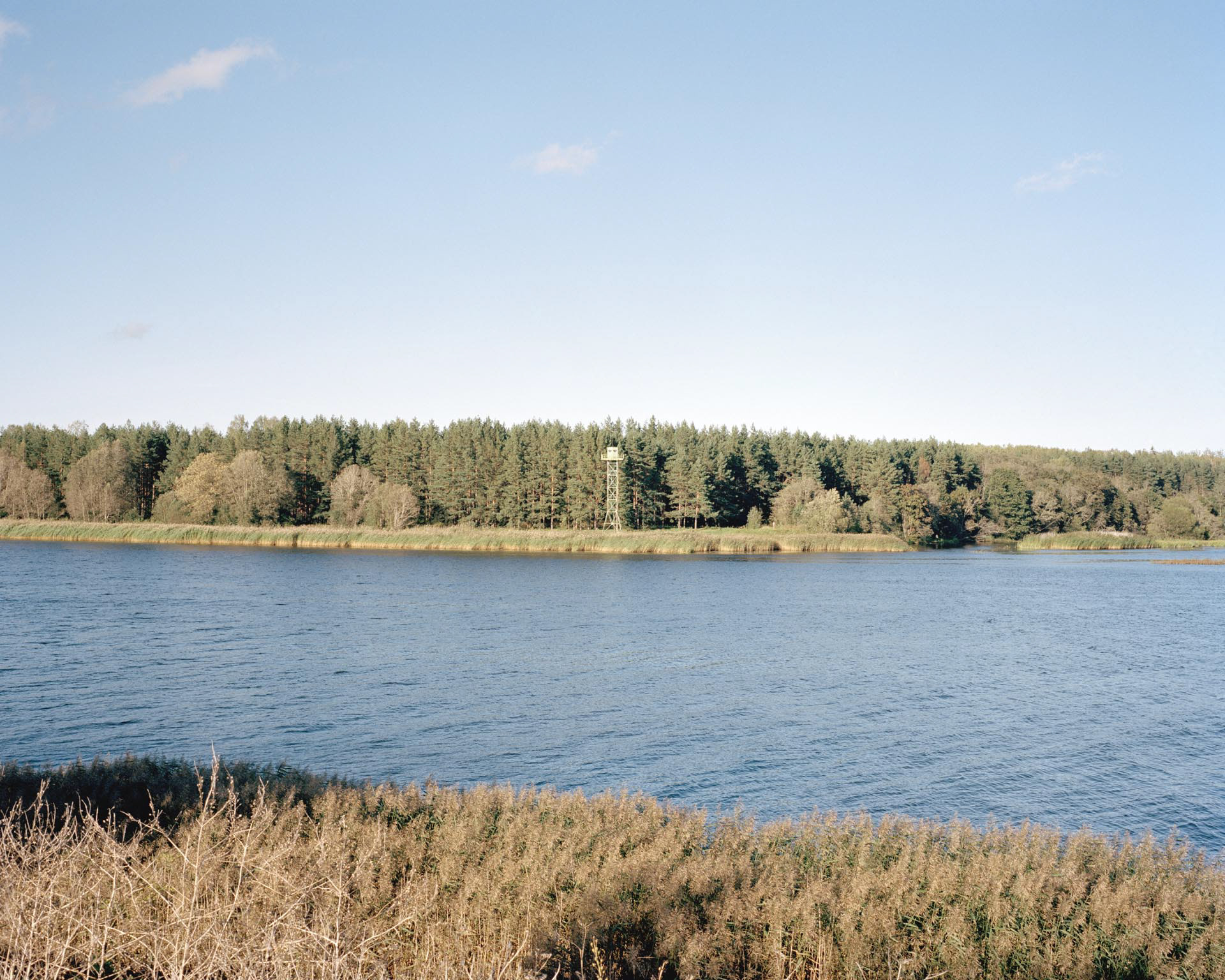
Russian watchtower on the border marked by the river Narva
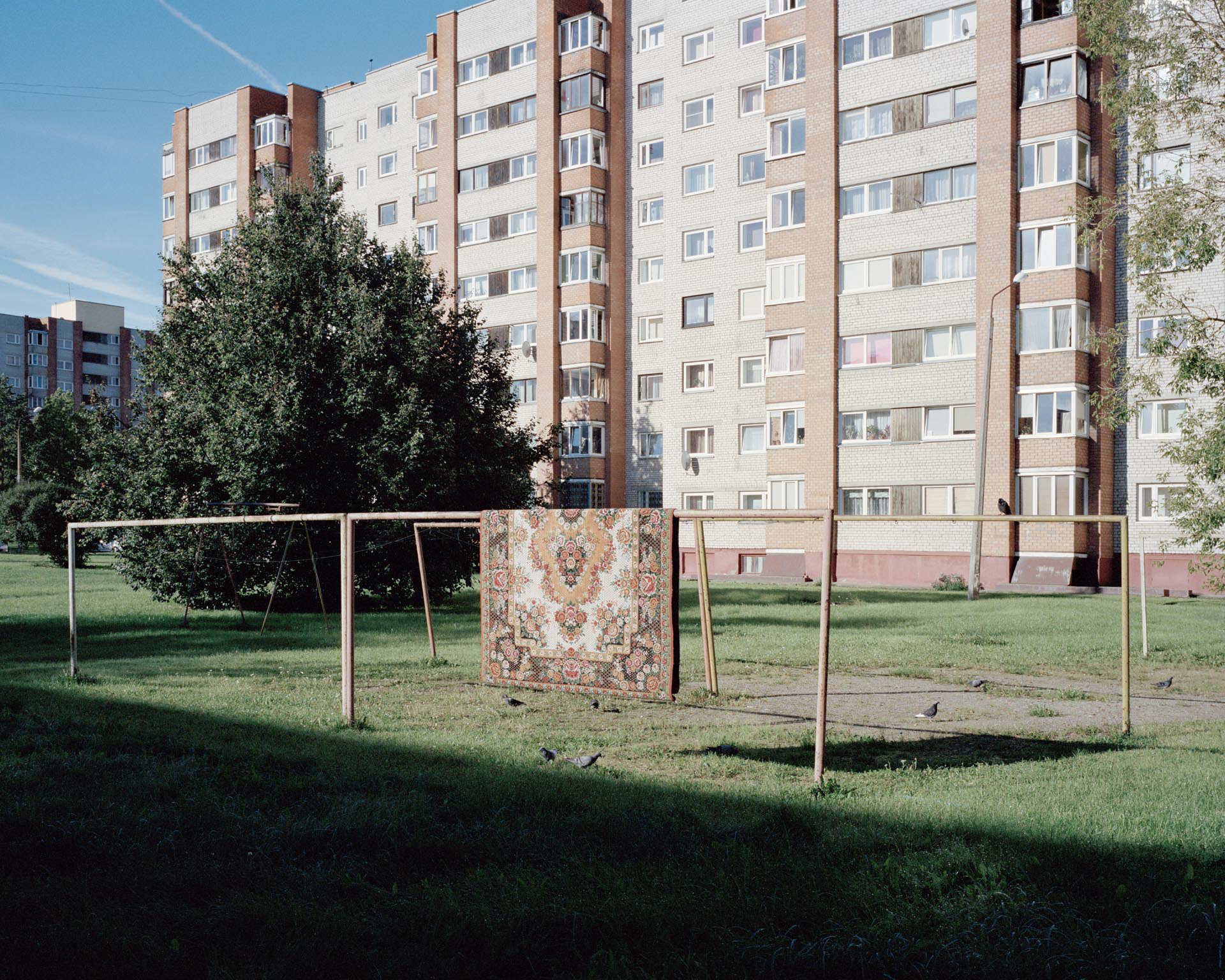
Narva, Estonia
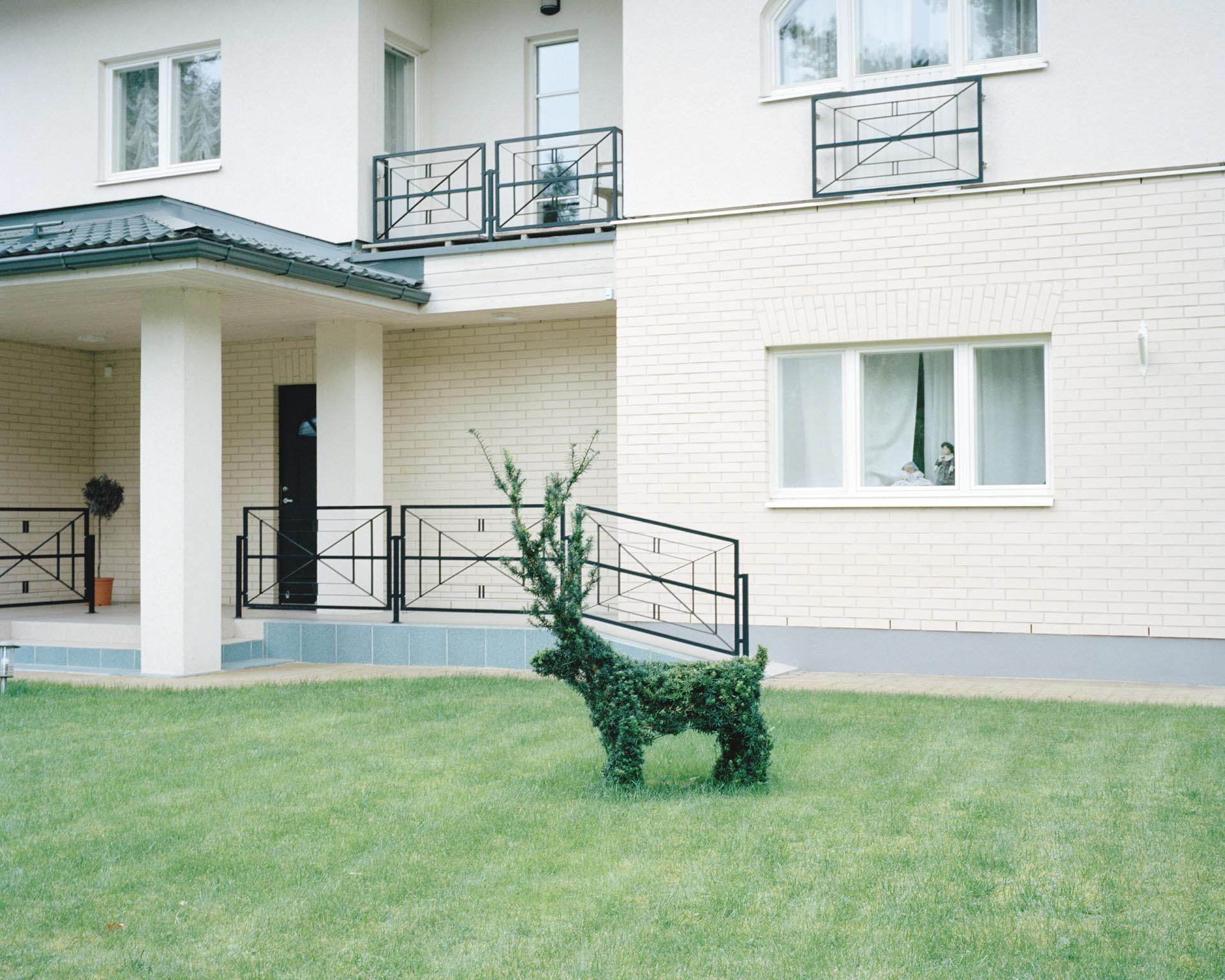
The garden of a house in Narva-Jõesuu
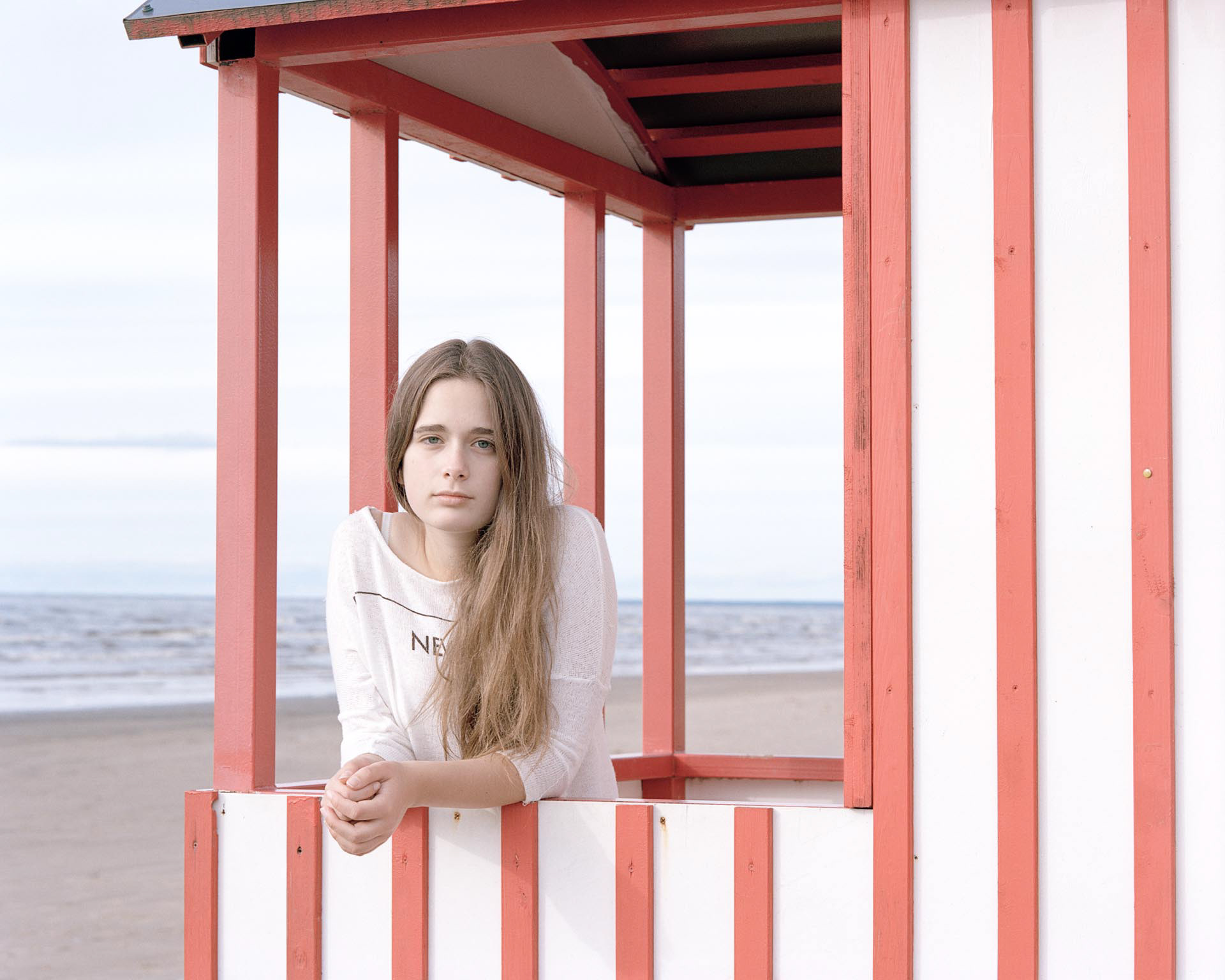
Alina on the beach of Narva-Jõesuu
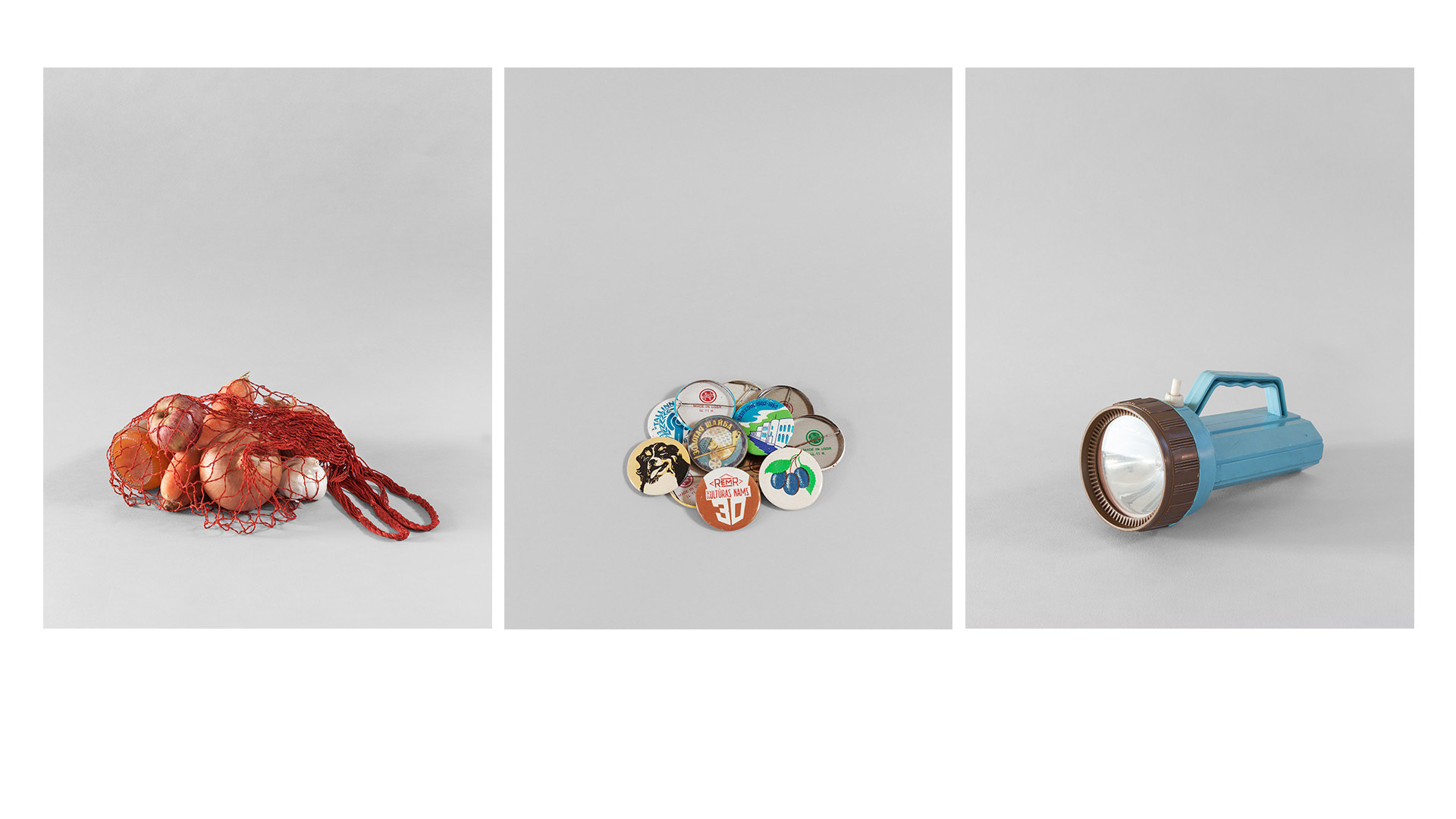
Everyday items found in situ belonging to the Soviet period
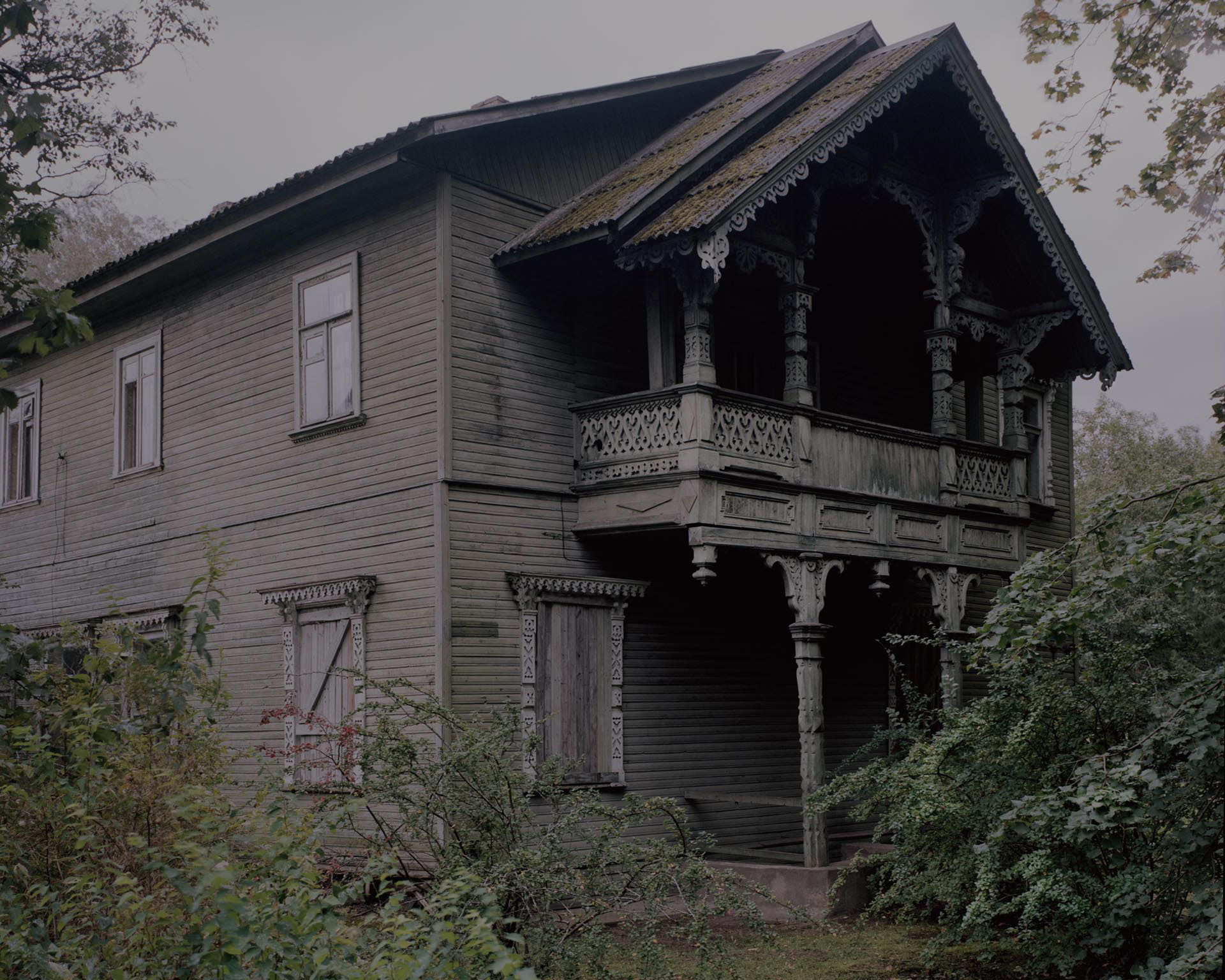
An abandoned traditional wooden Russian house in Narva-Jõesuu
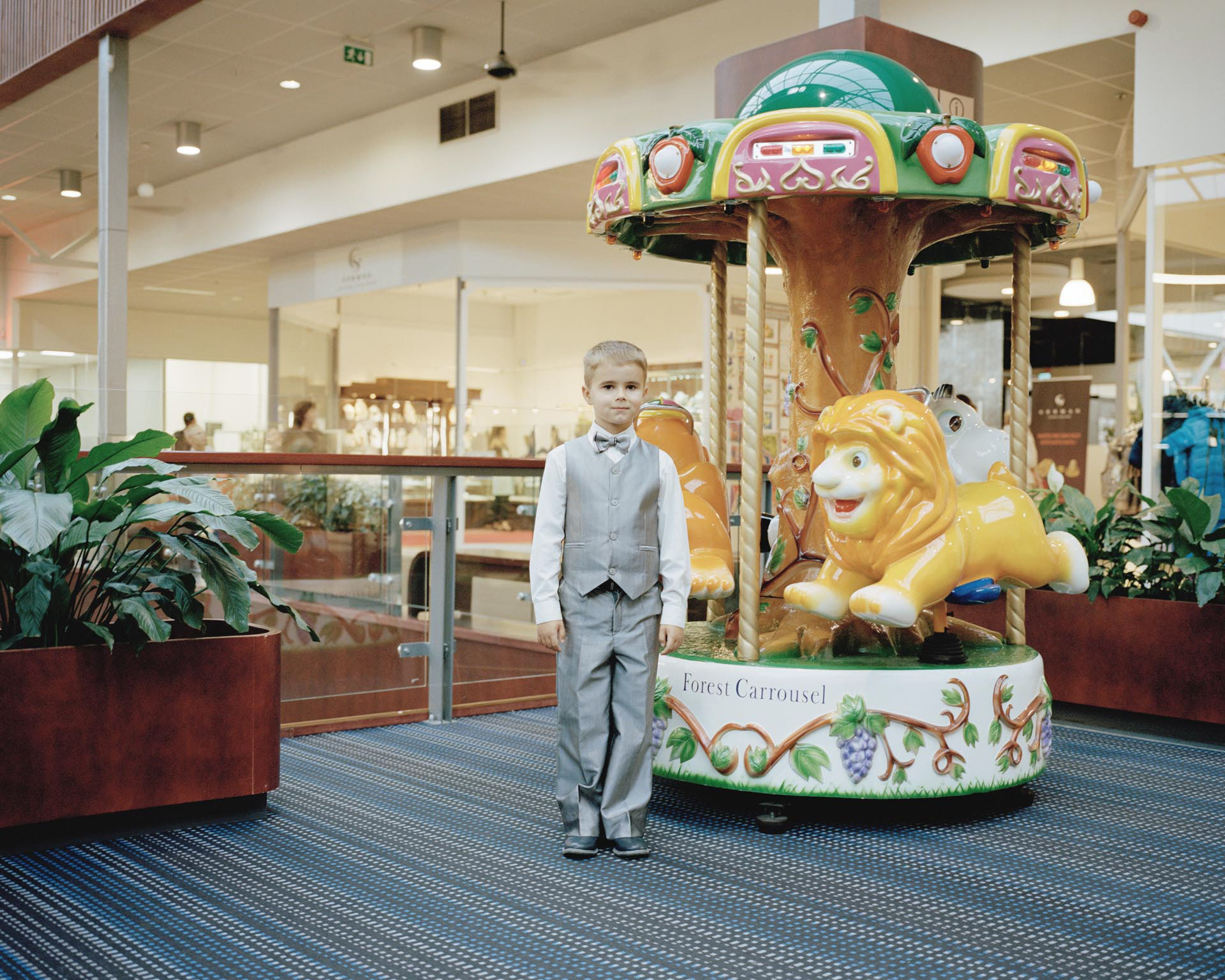
First day of school, Narva
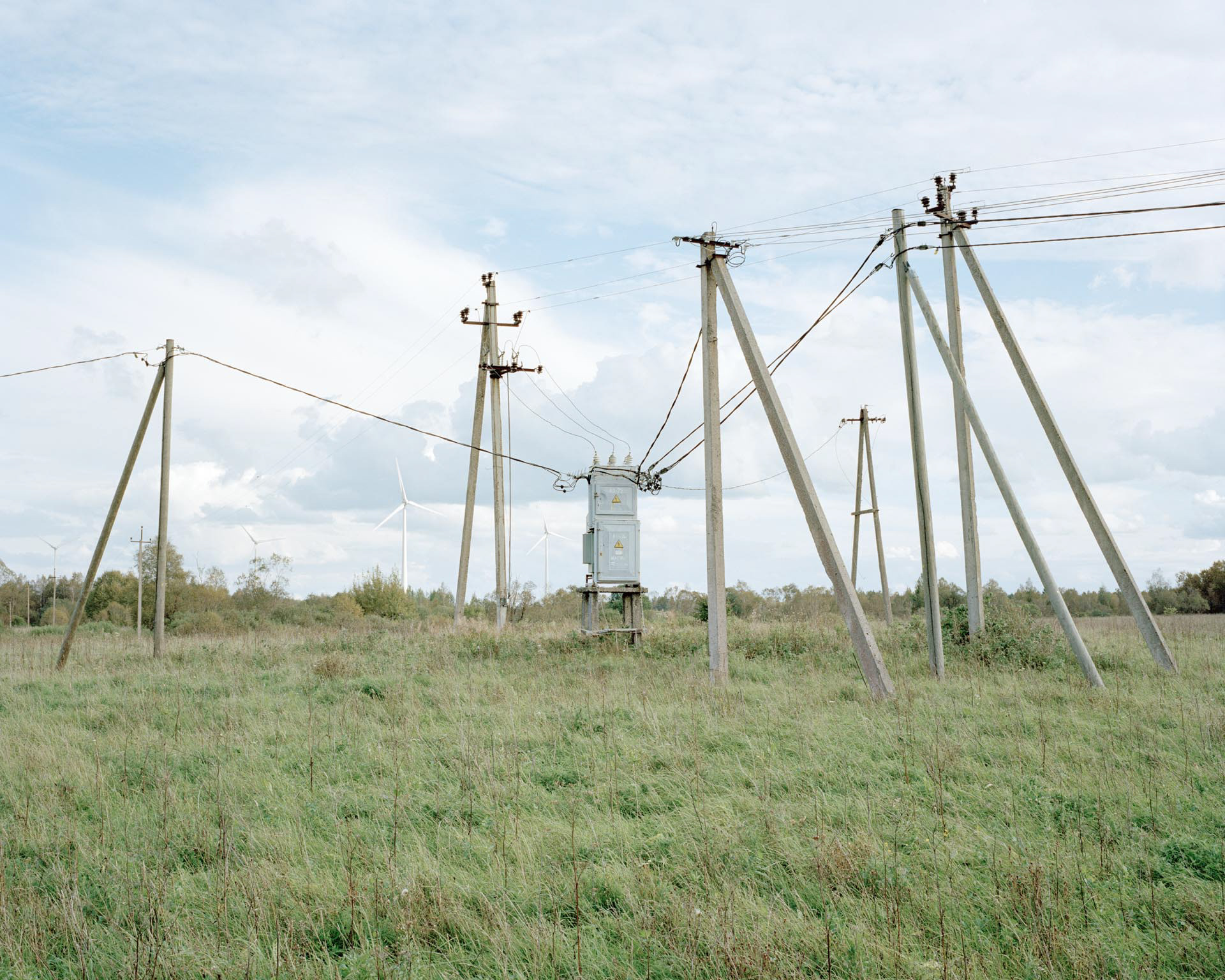
Just outside Narva
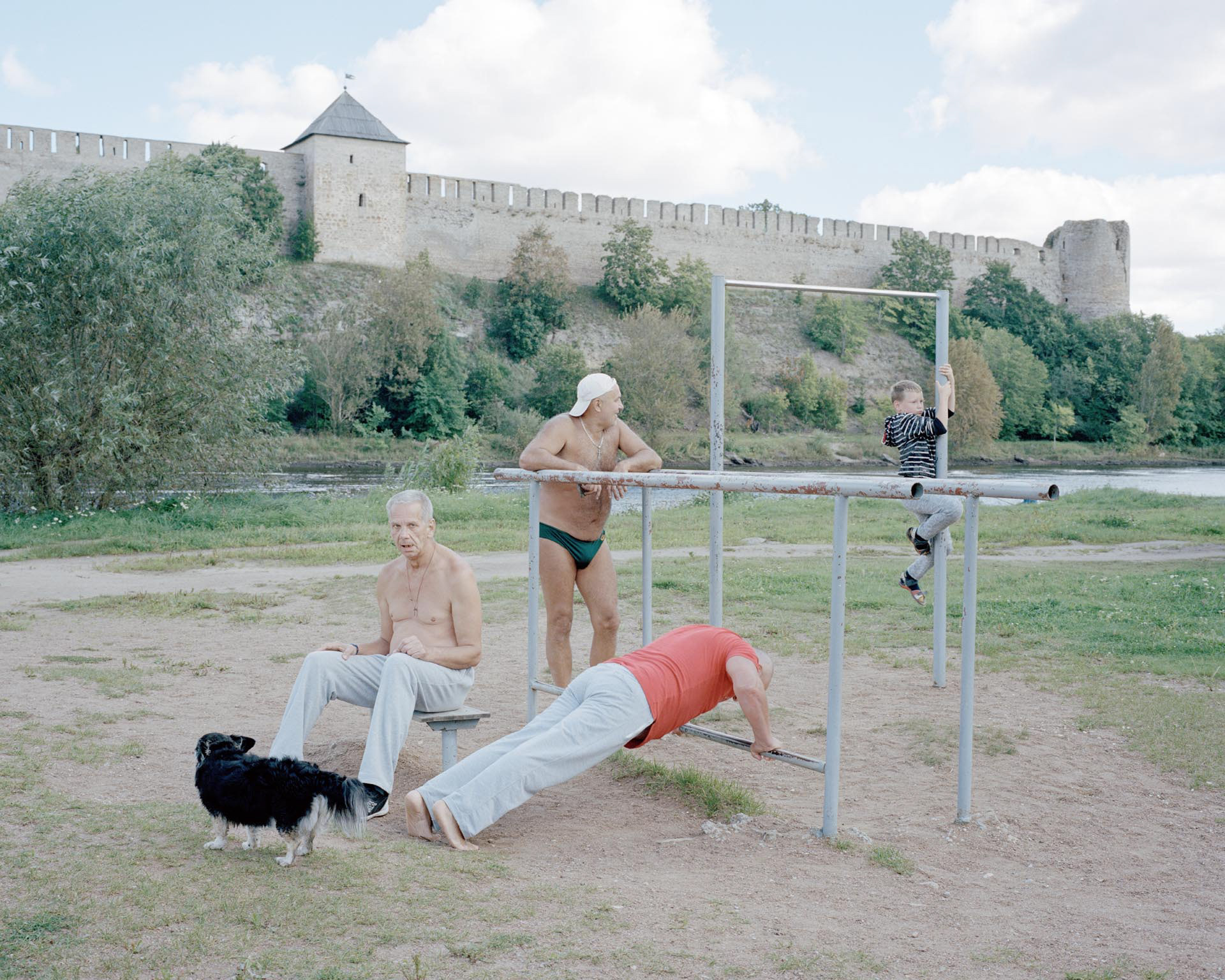
Gymnastics by the river Narva, the natural border between Russia and Estonia
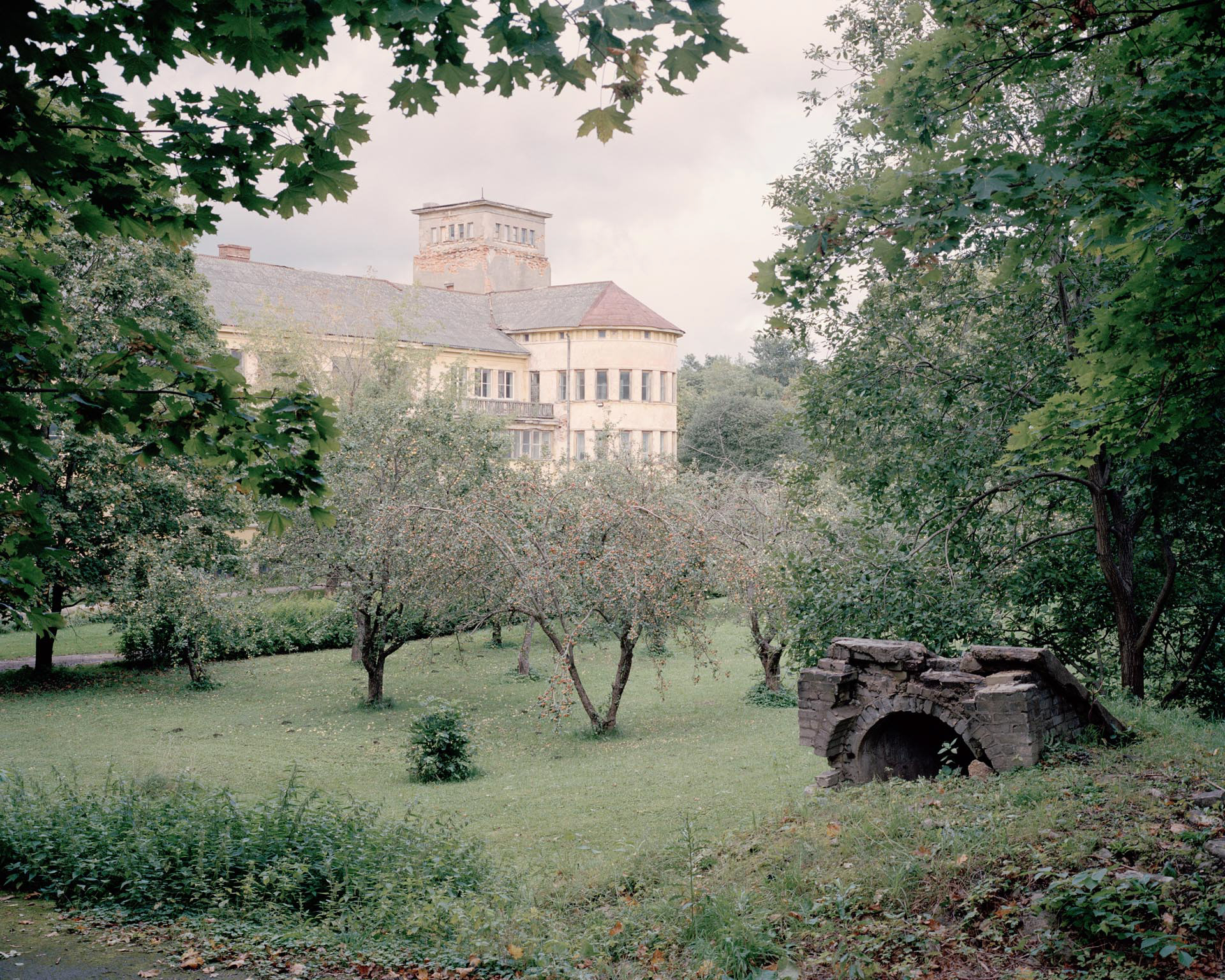
Apple orchard in Kohtla-Järve
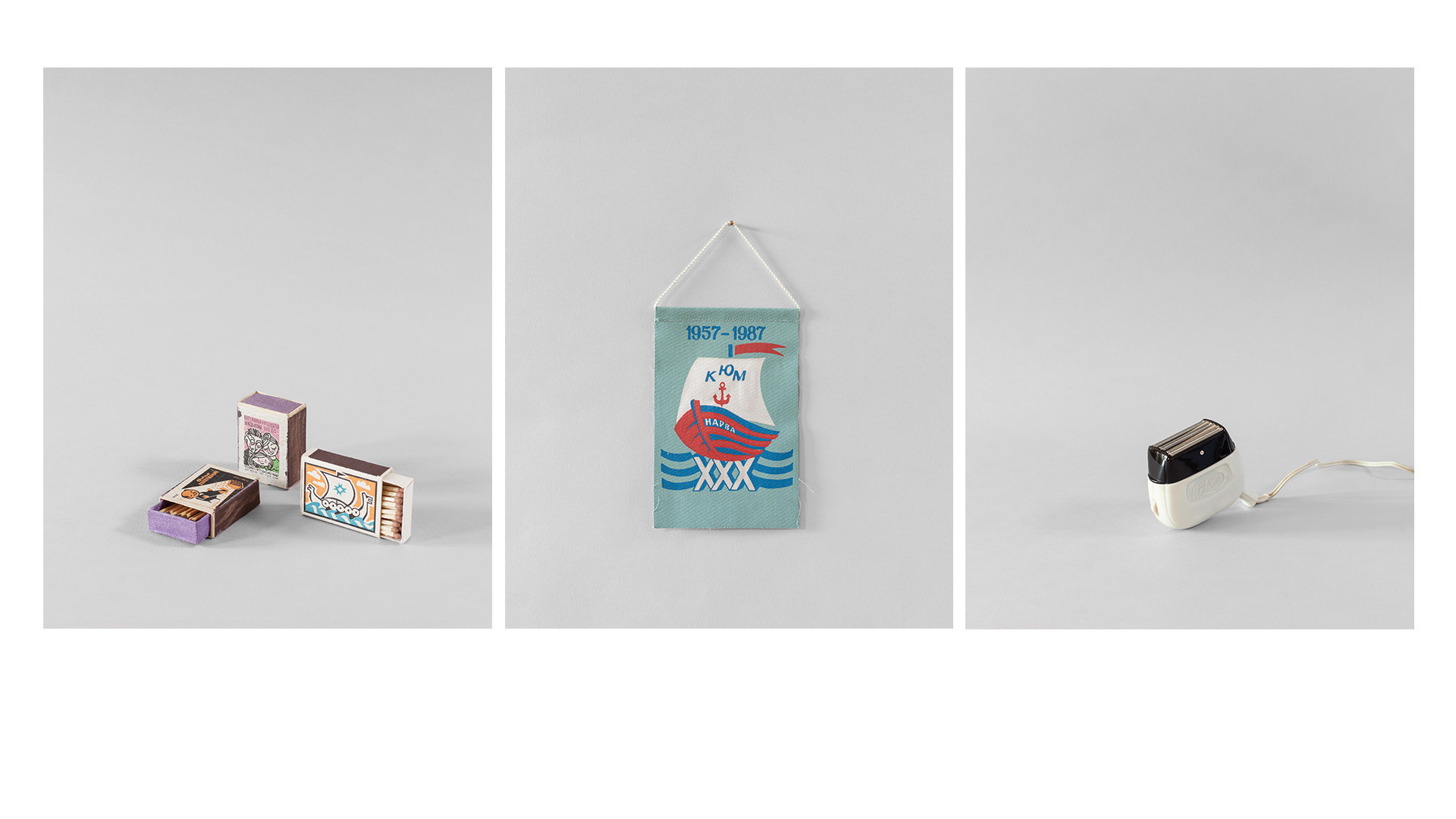
Everyday items found in situ belonging to the Soviet period
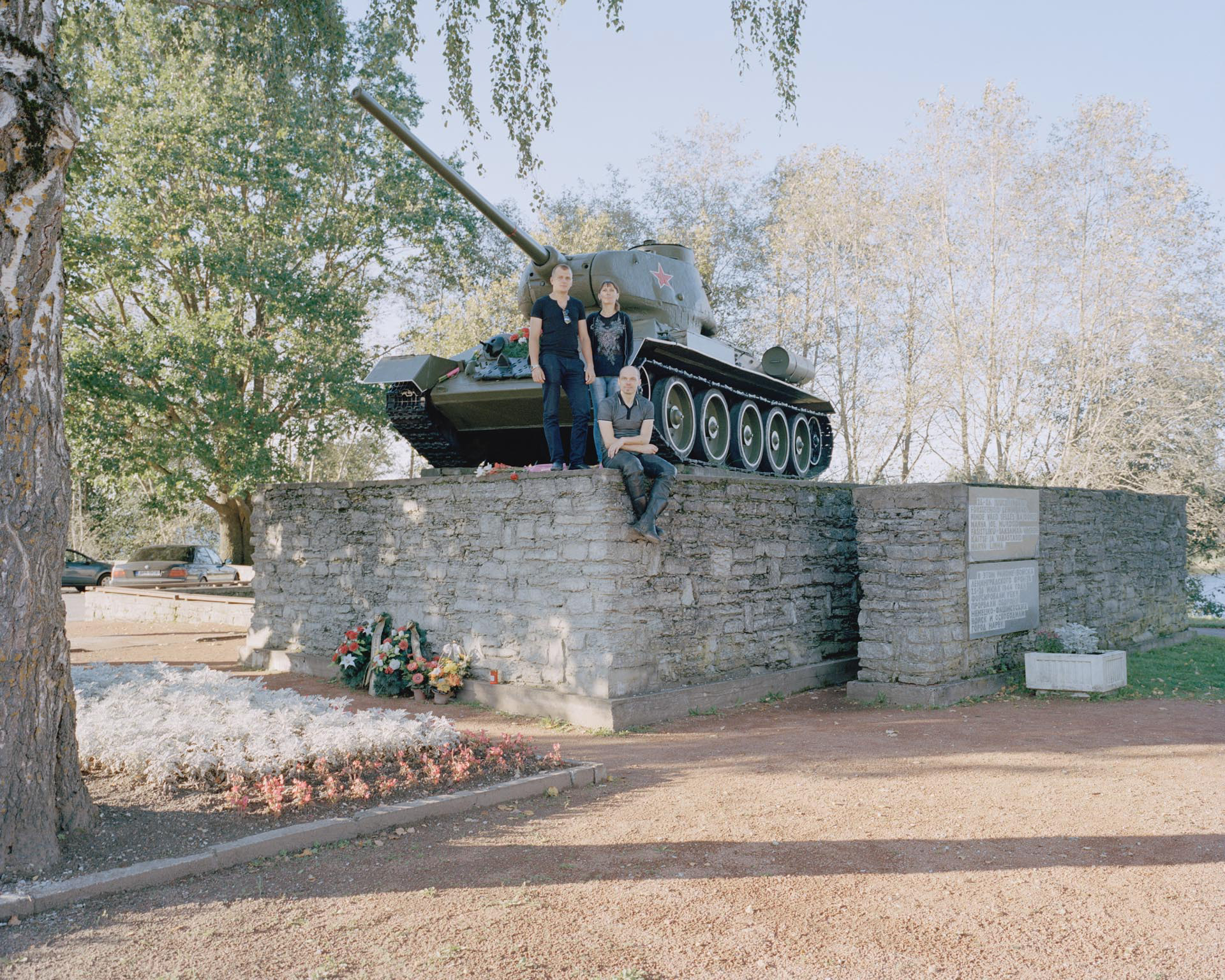
Stanislav, Sergey and Victoria are members of Pamjat, an organization that finances and takes care of the restoration of Soviet and Red Army monuments and memorials to bring them back to their original splendor, Narva
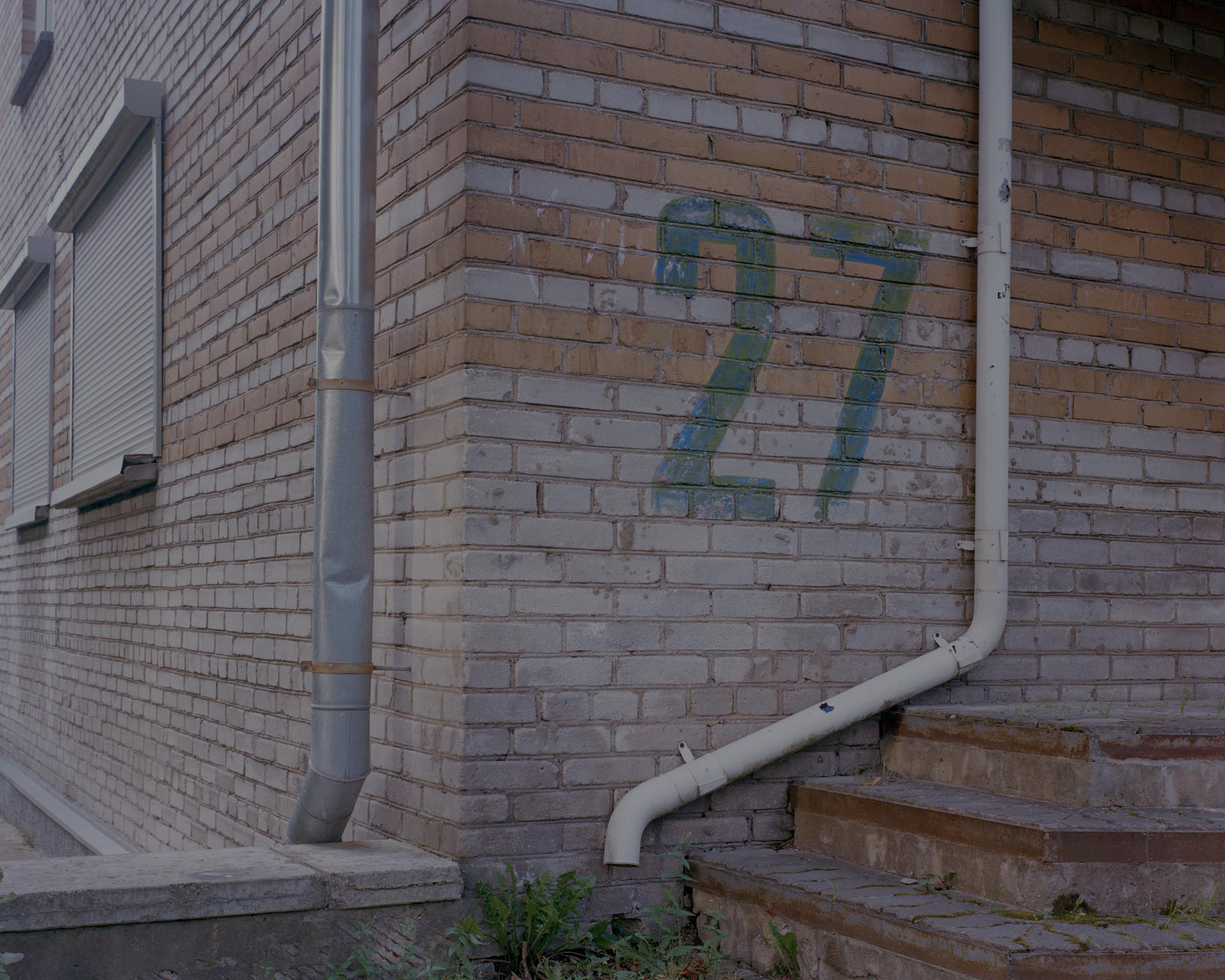
Soviet flat block in Narva, Estonia
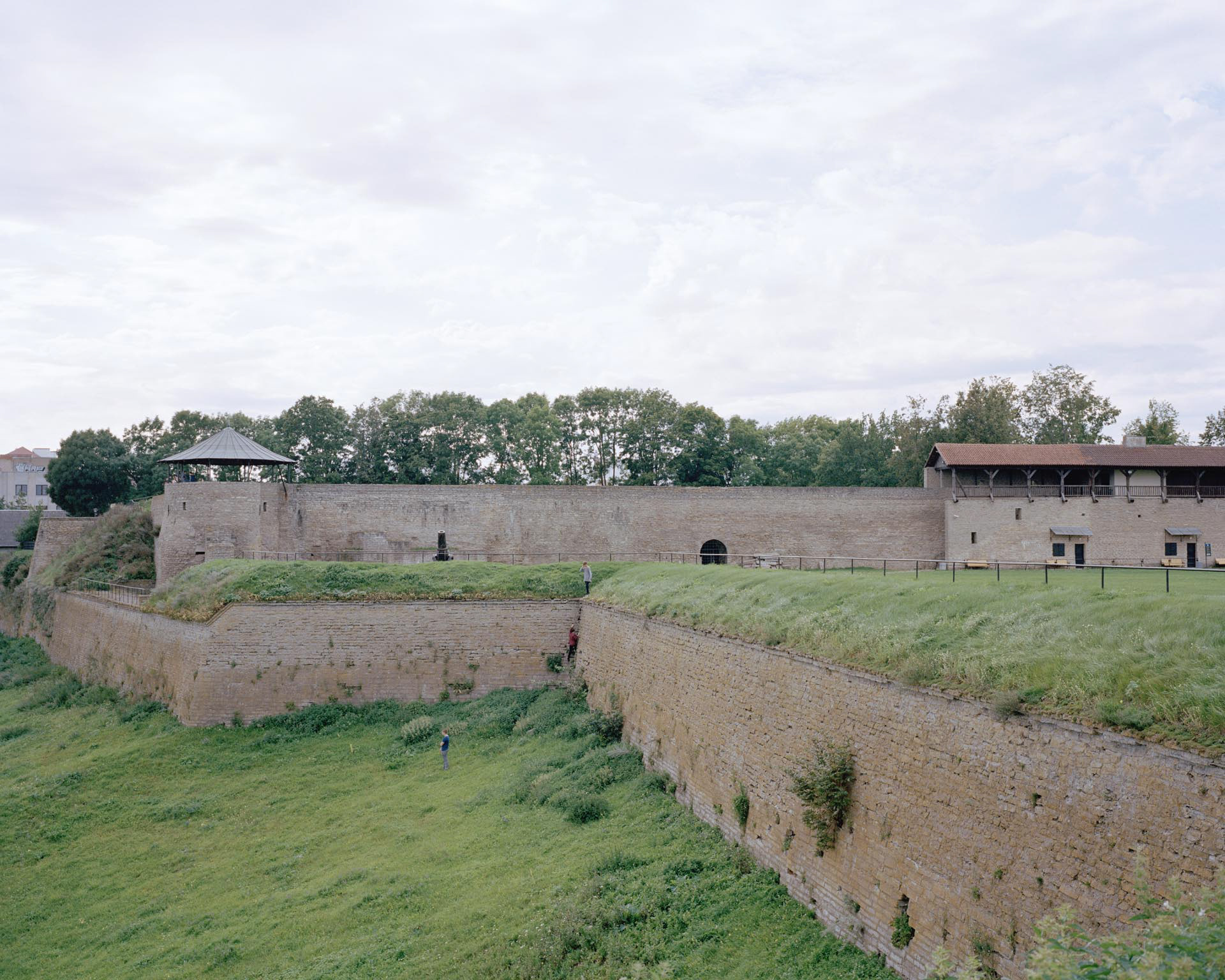
Kids climbing the wall of the Narva fortress

Valentina Egorova is the director of the Sillamäe House of Culture: "You often feel nostalgic about the old times, when you had job security and no worries for food and basic necessities"
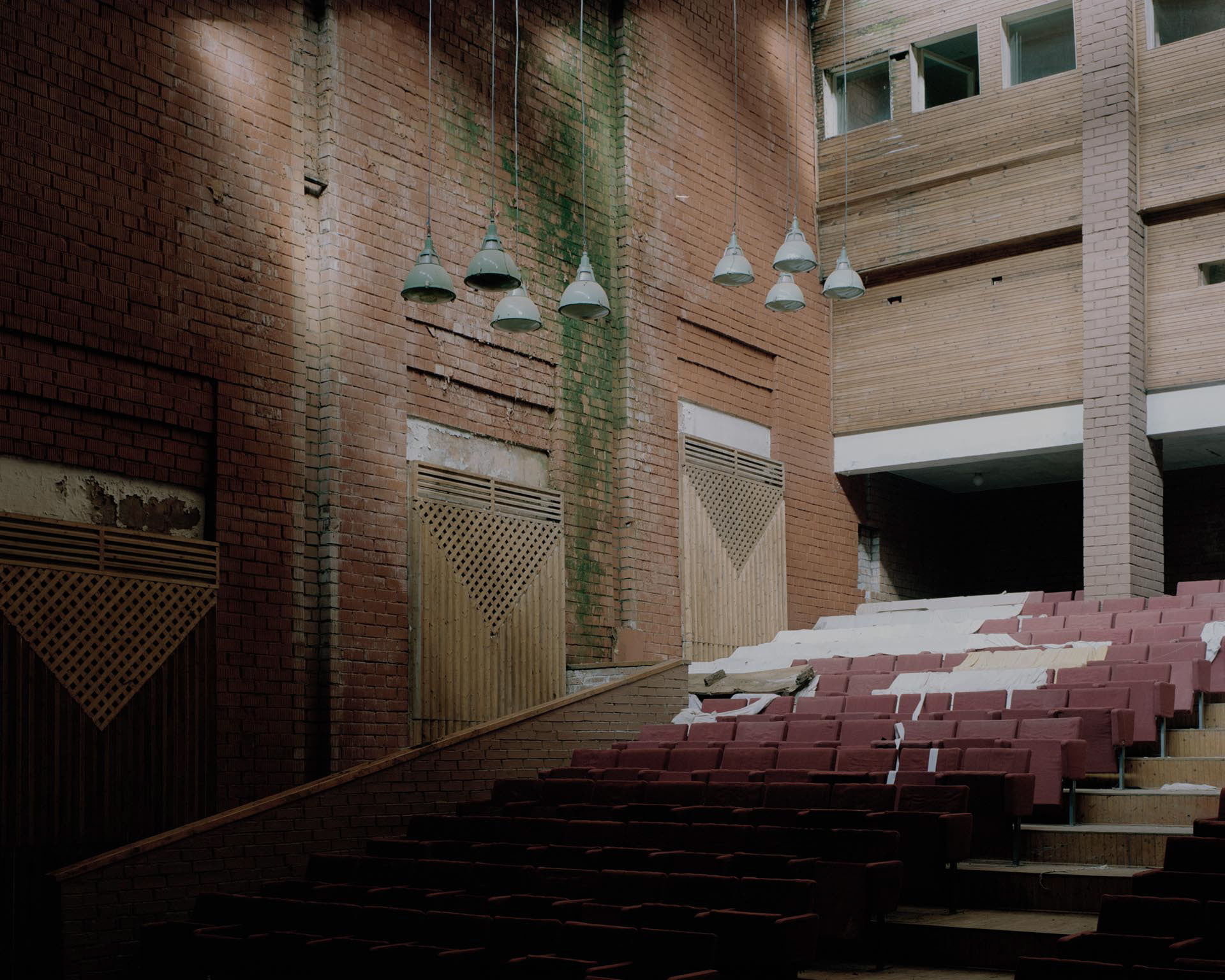
Abandoned holiday resort on the Peipsi lake, Uusküla
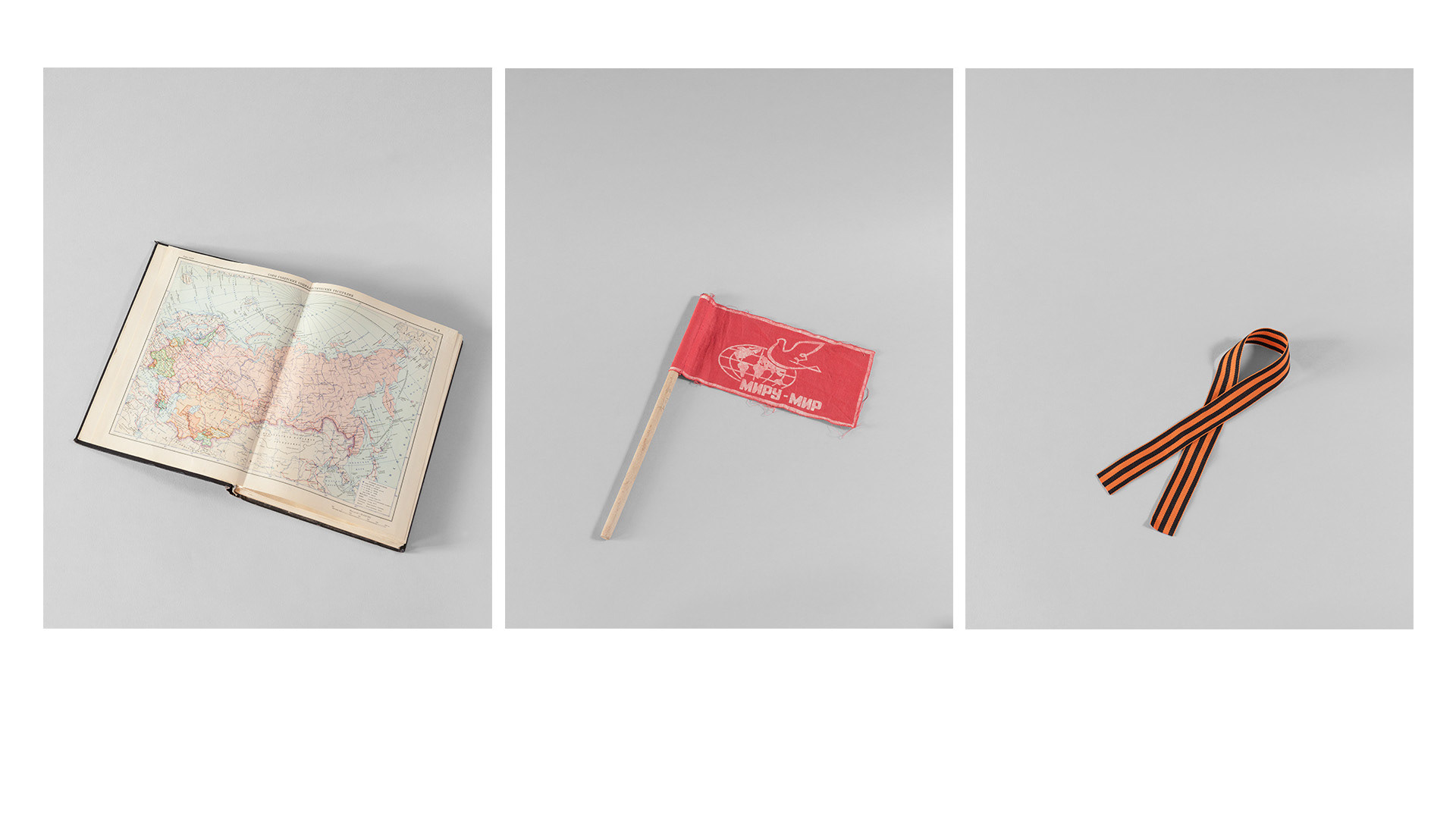
Everyday items found in situ belonging to the Soviet period
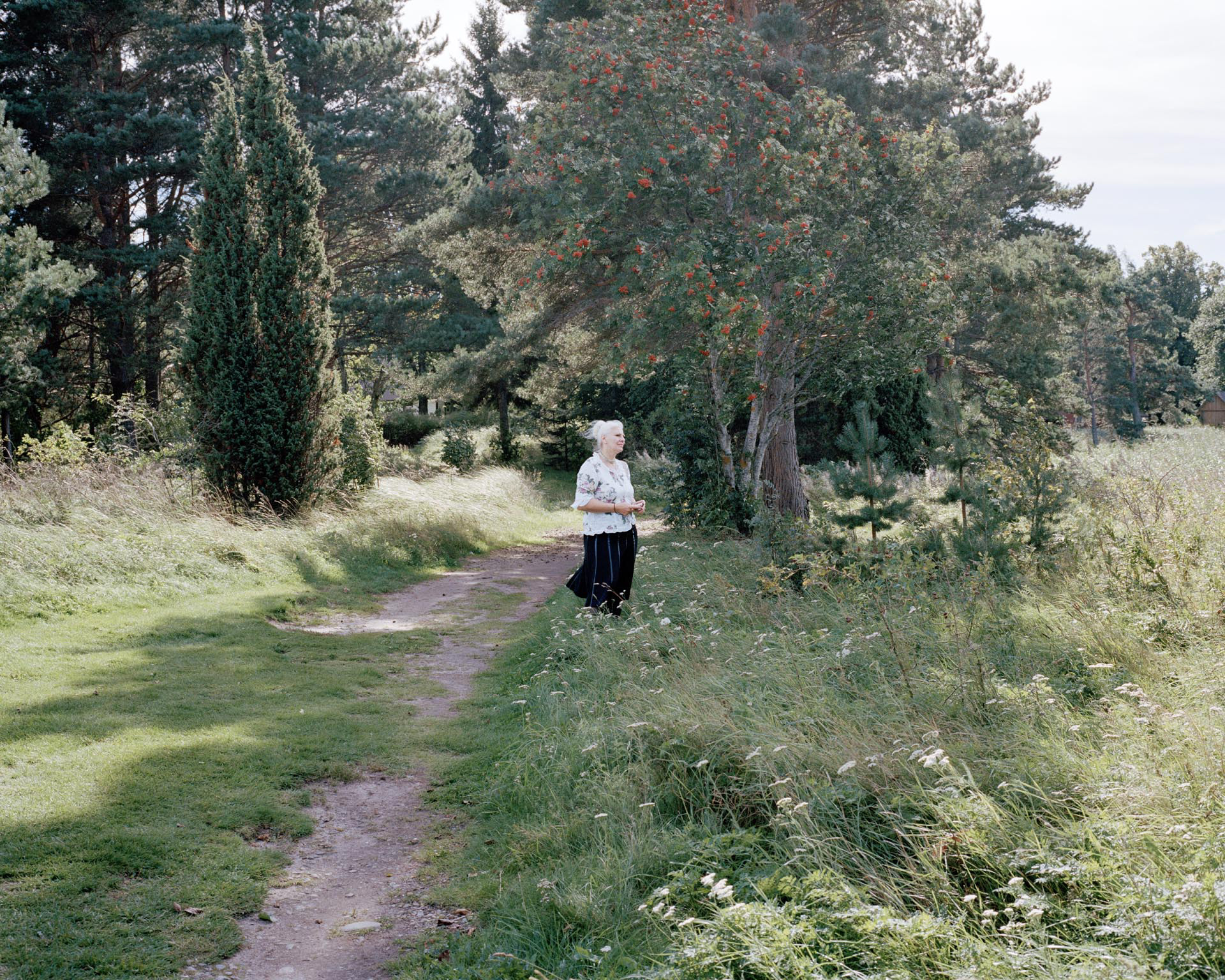
A representative of the Ukrainian minority visiting the town of Käsmu
Exhibition at Benaki Museum, Athens (Greece), 2017